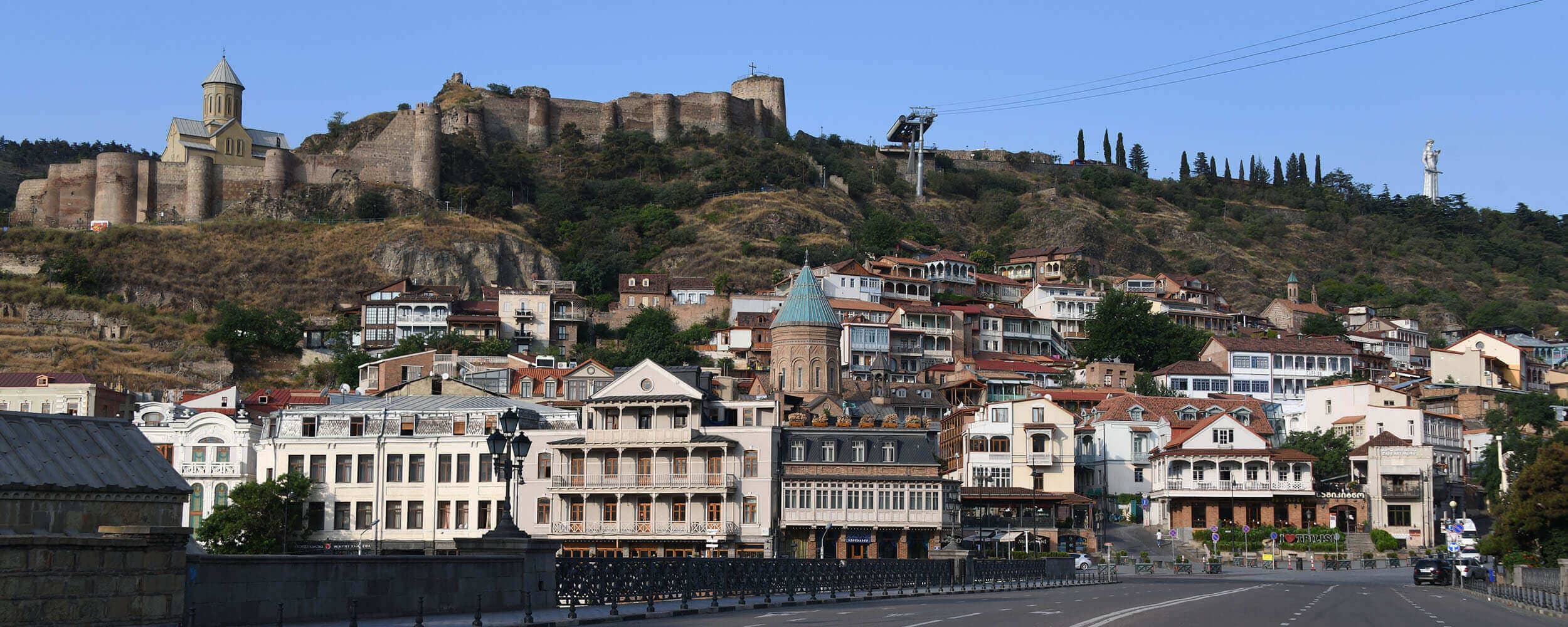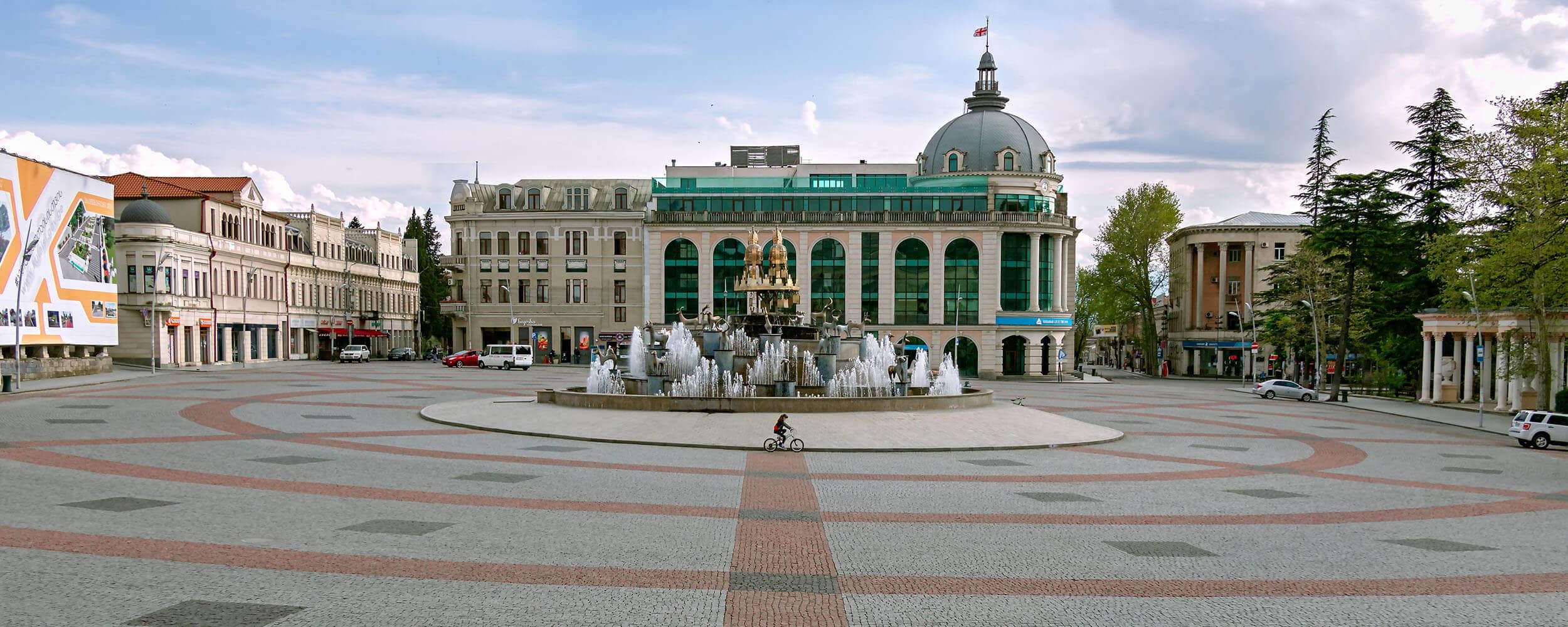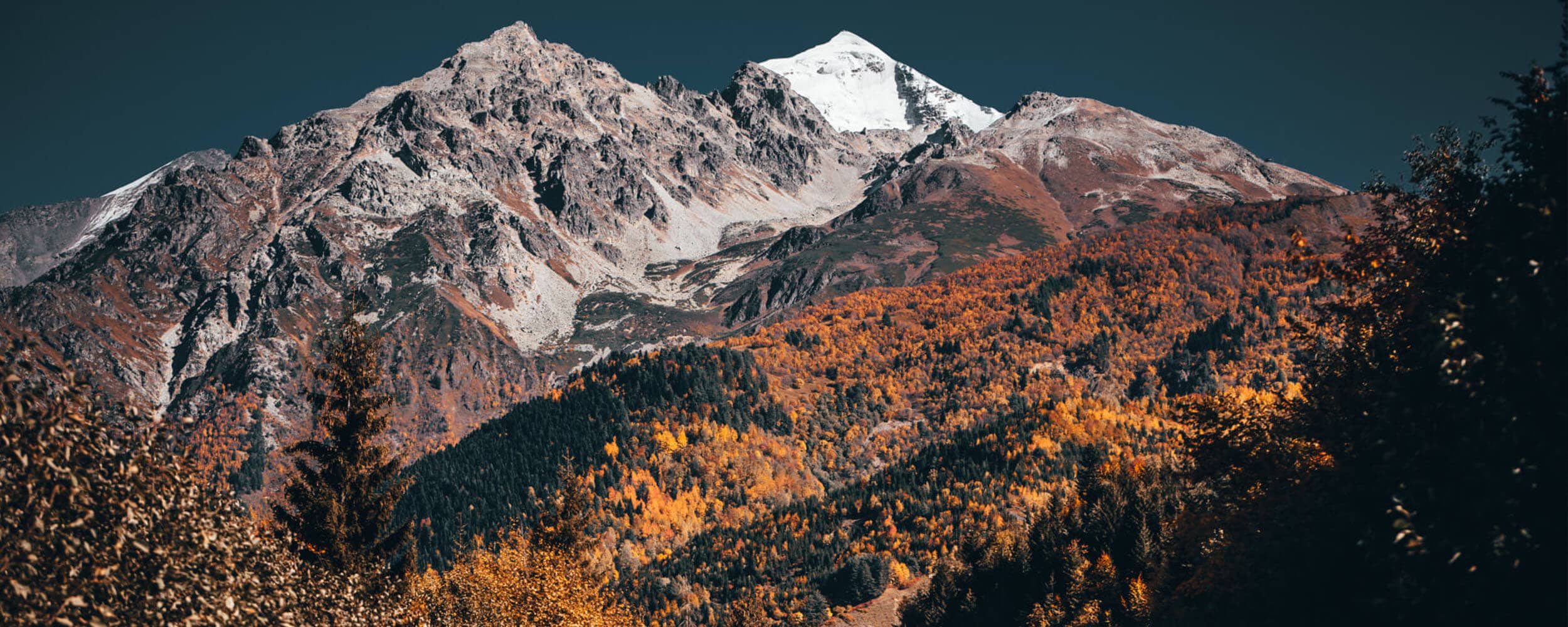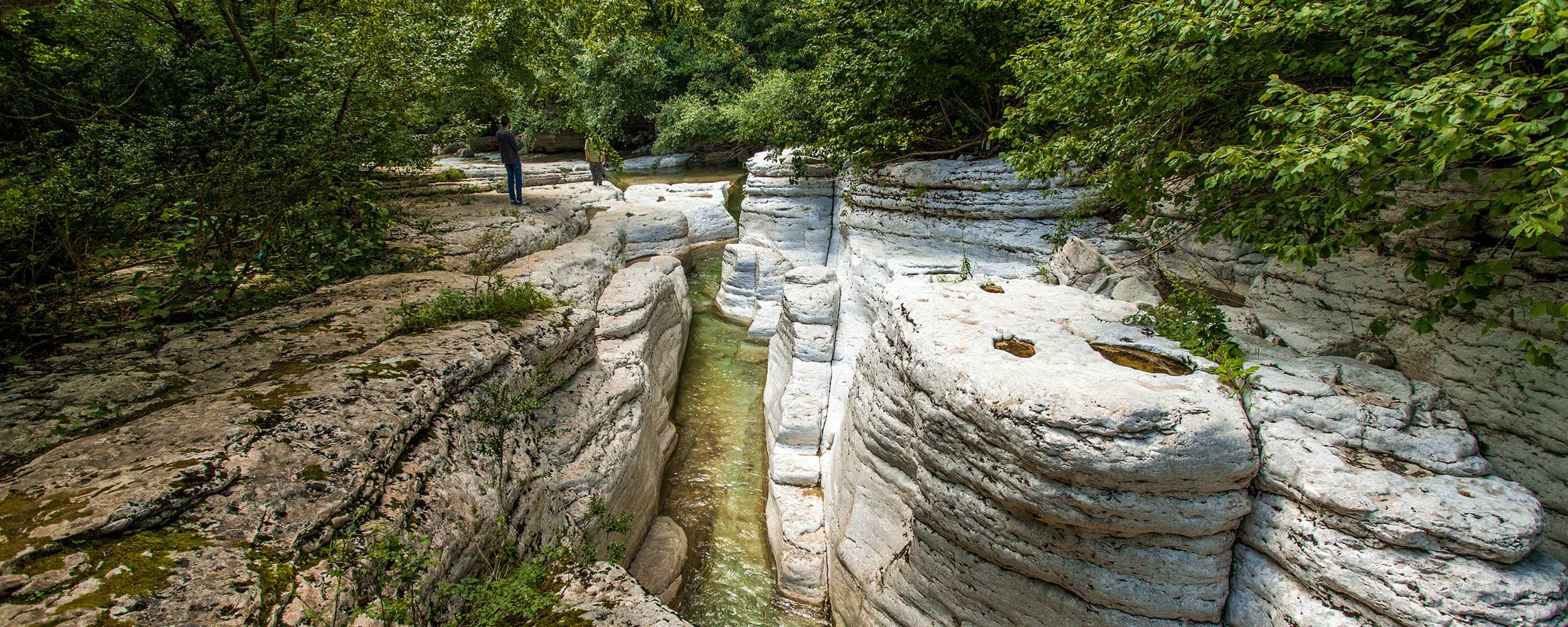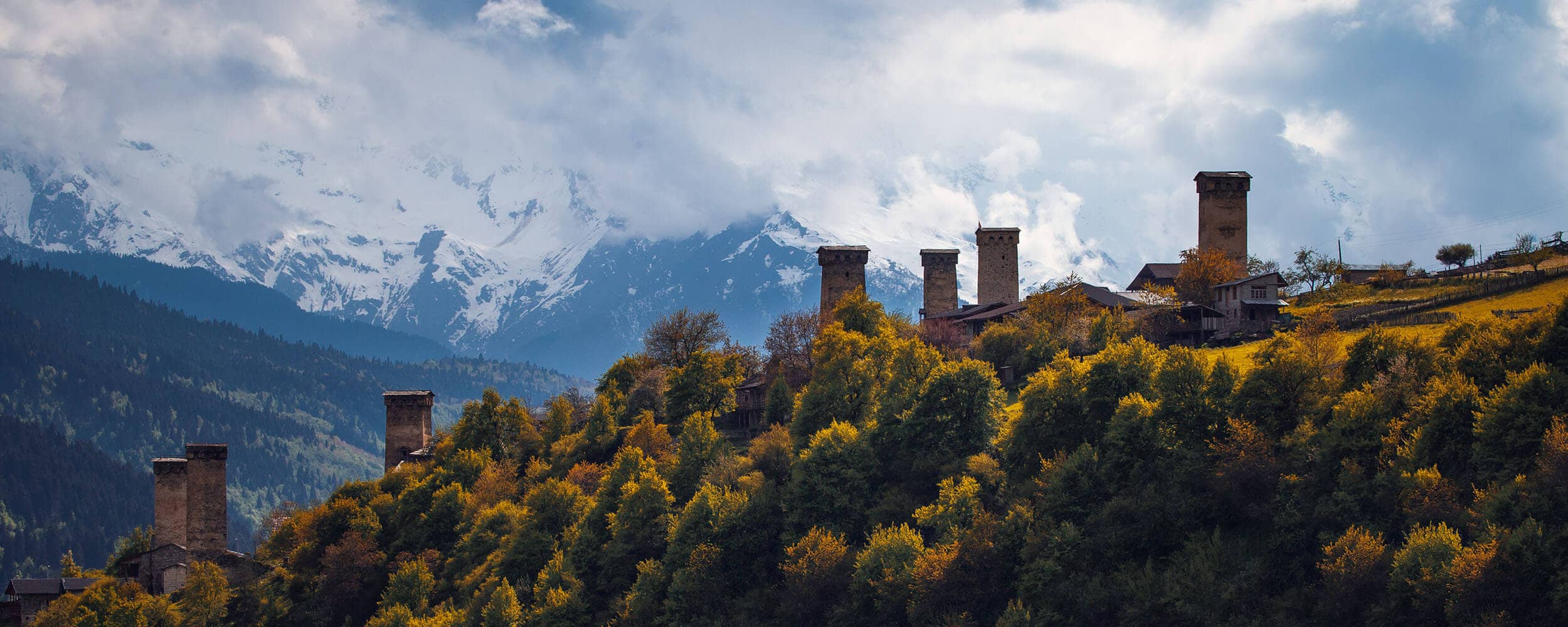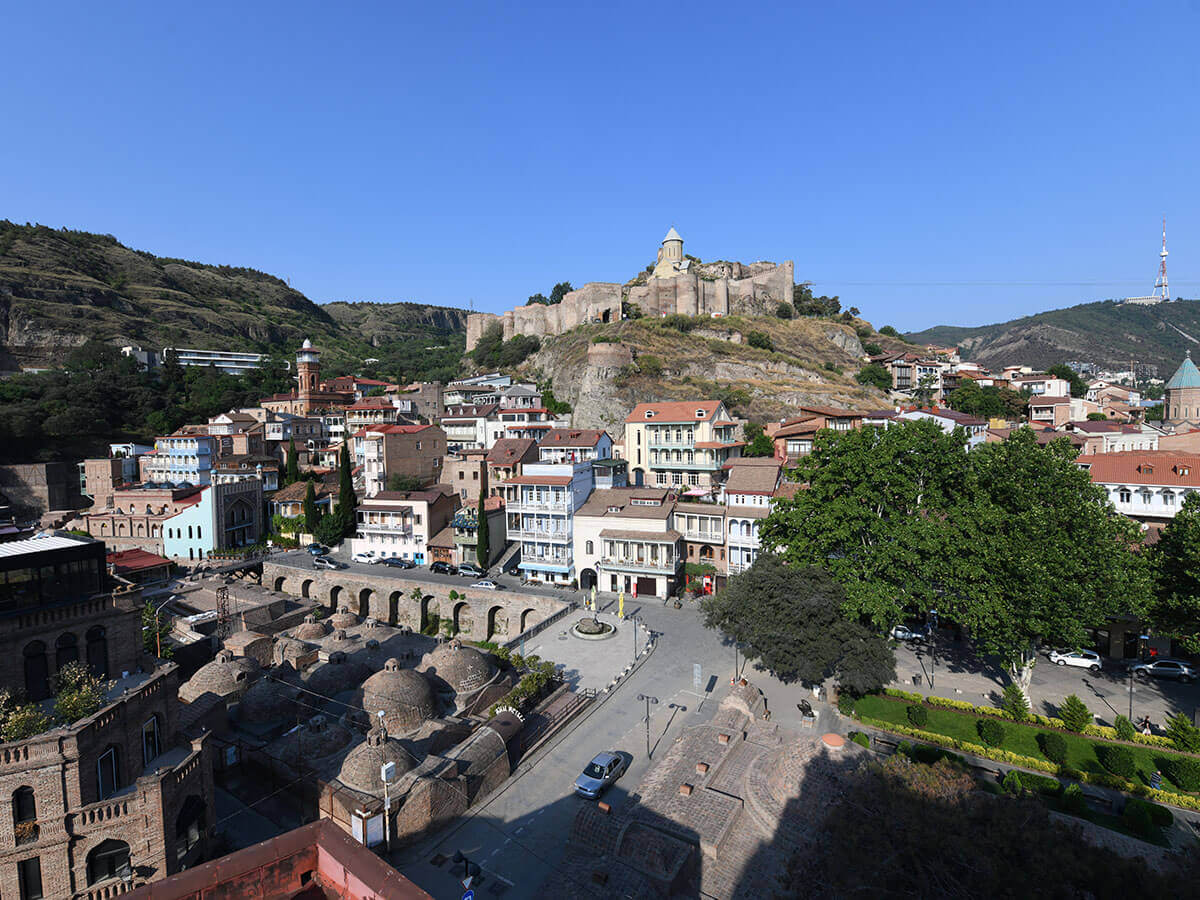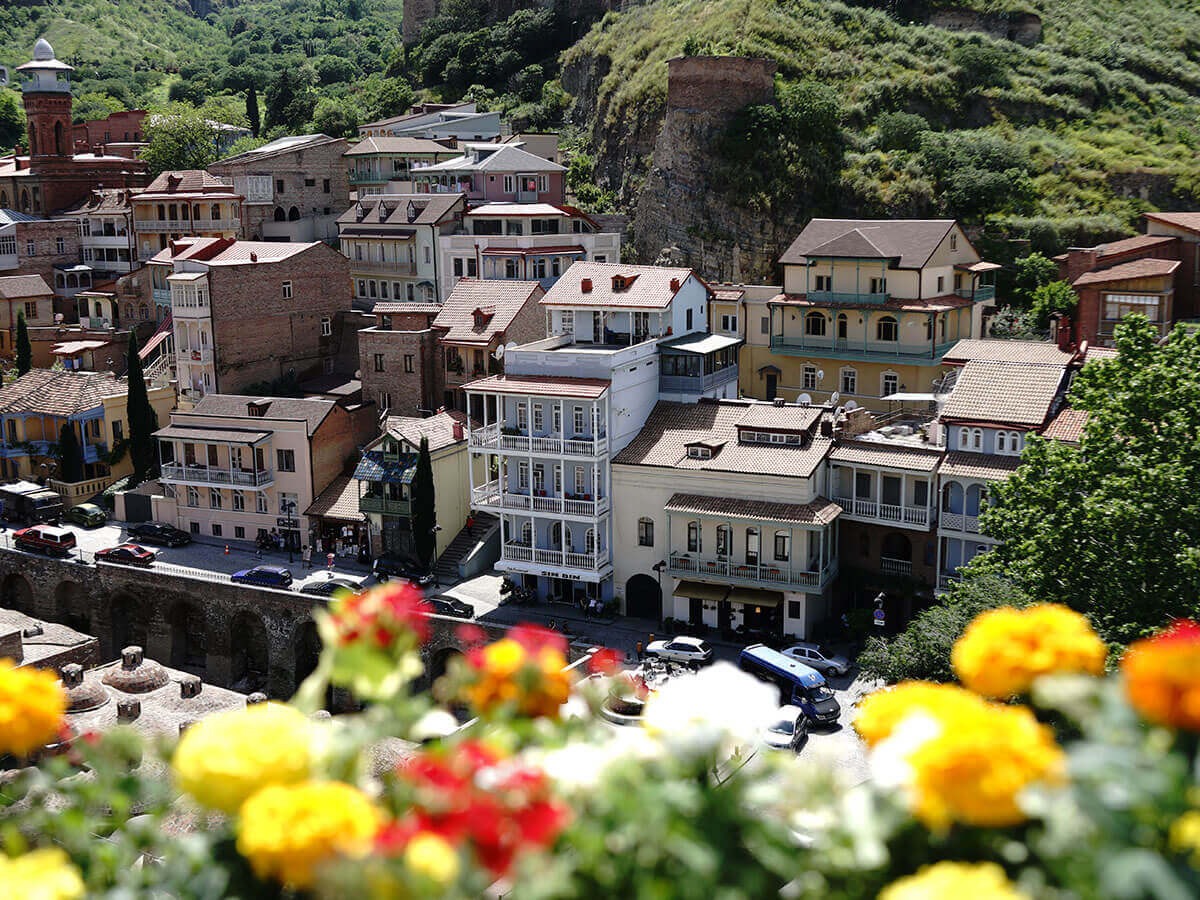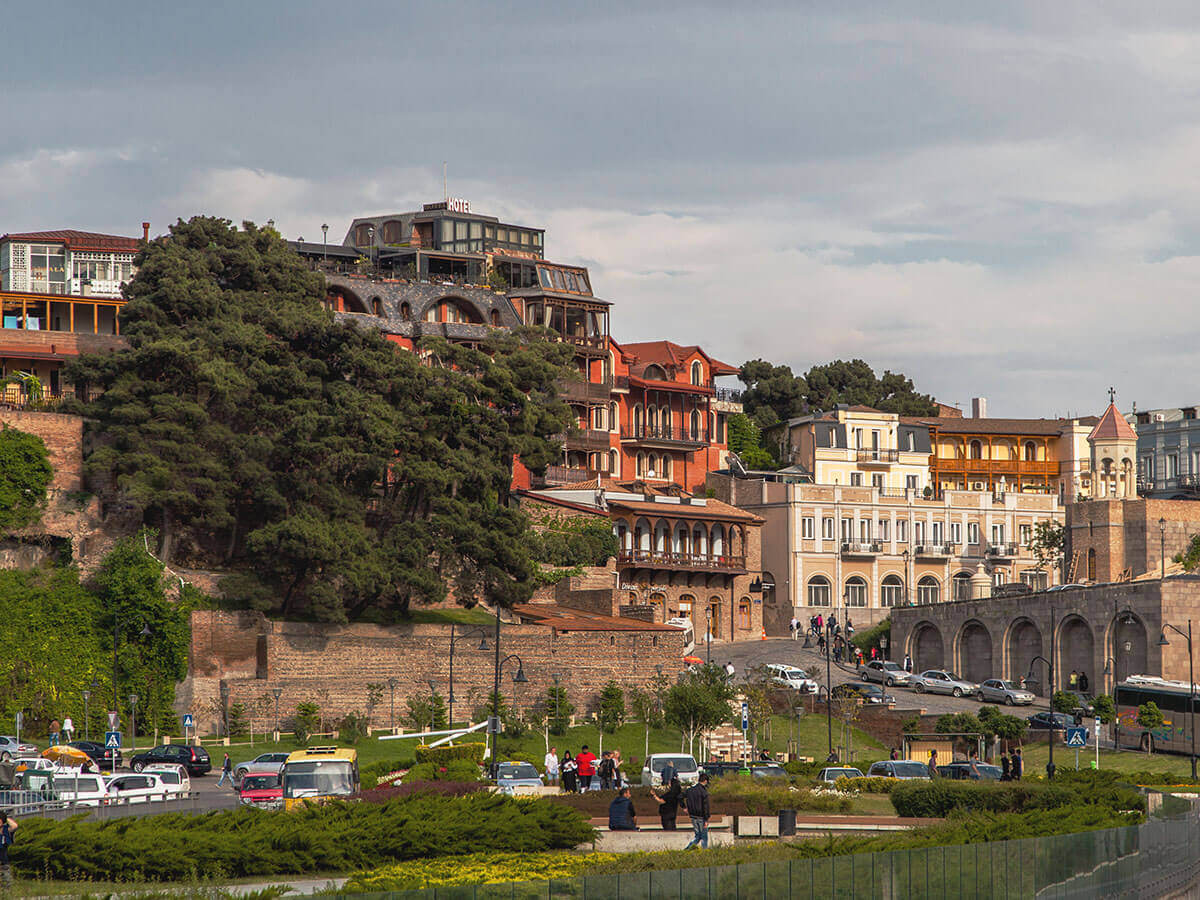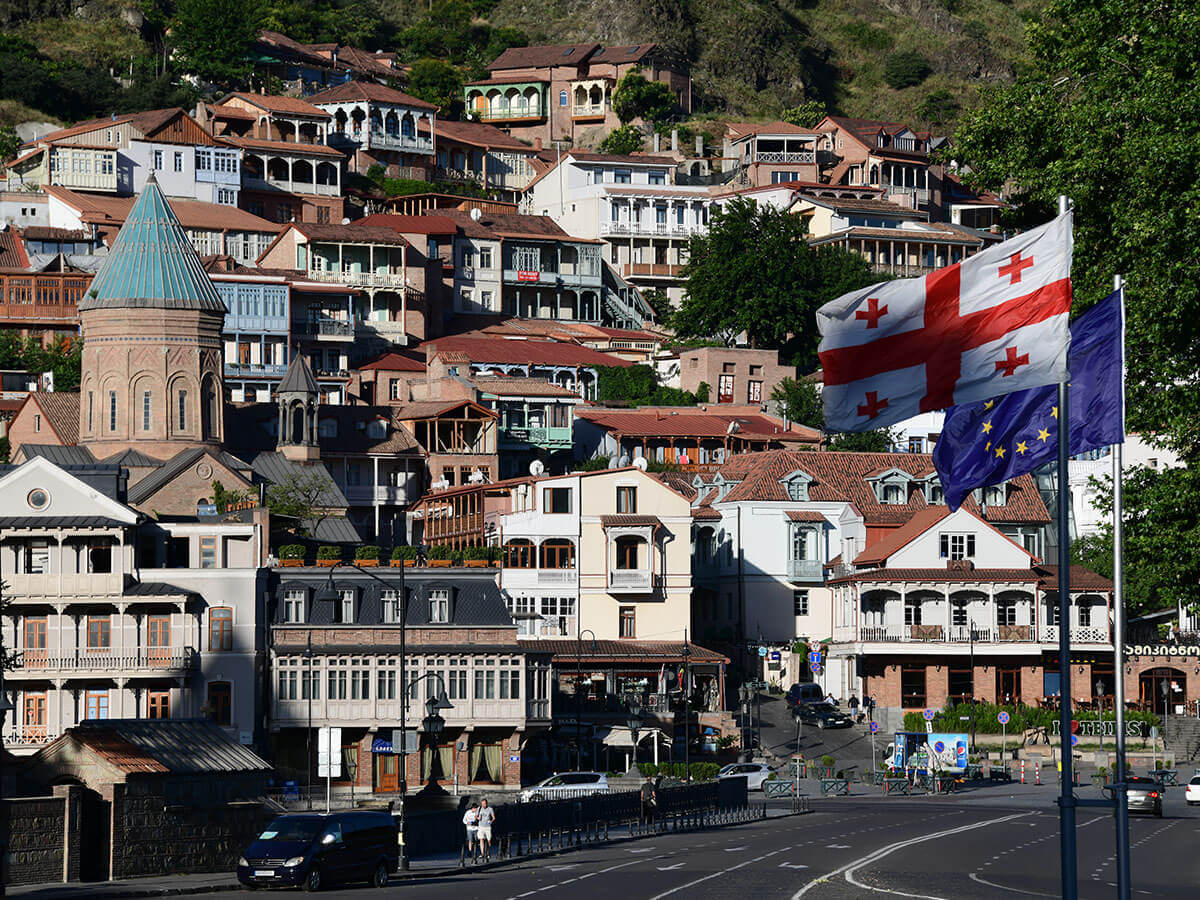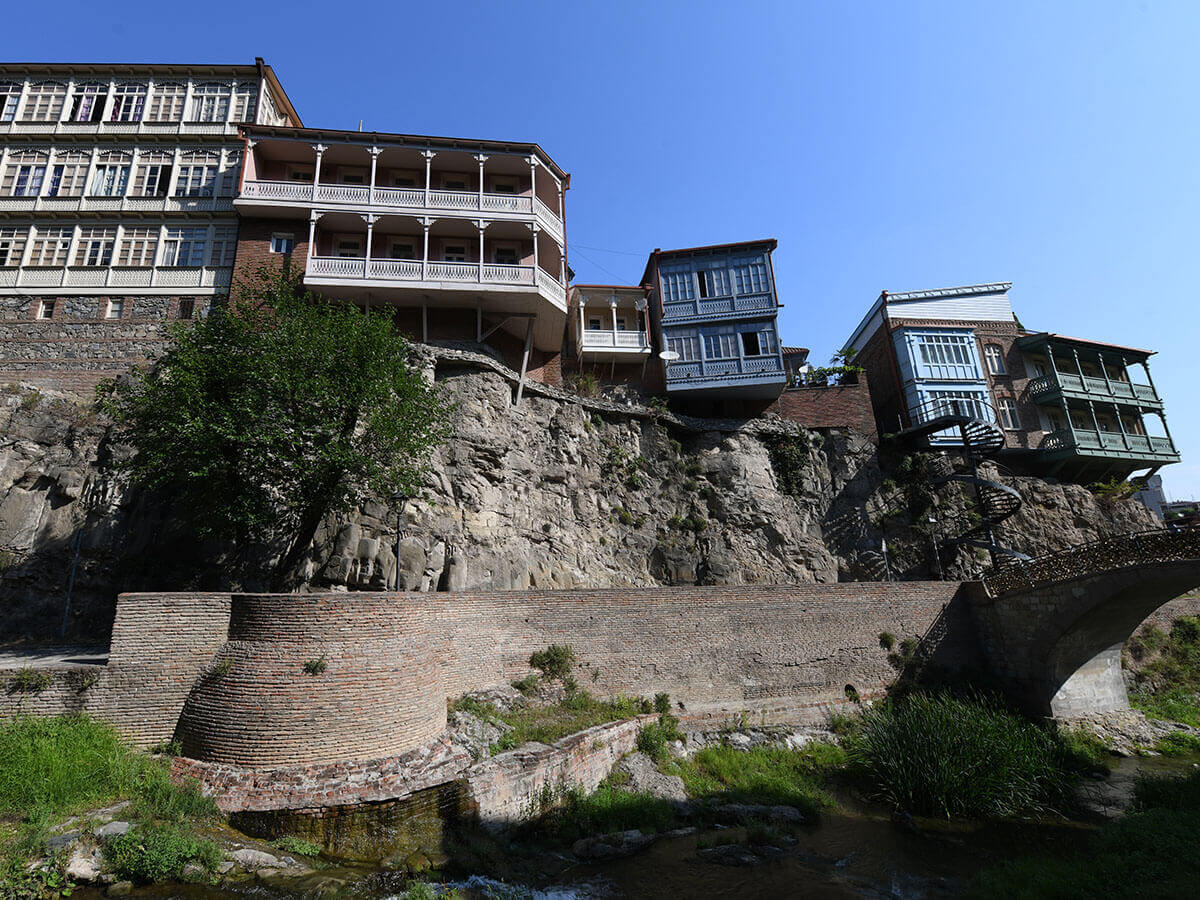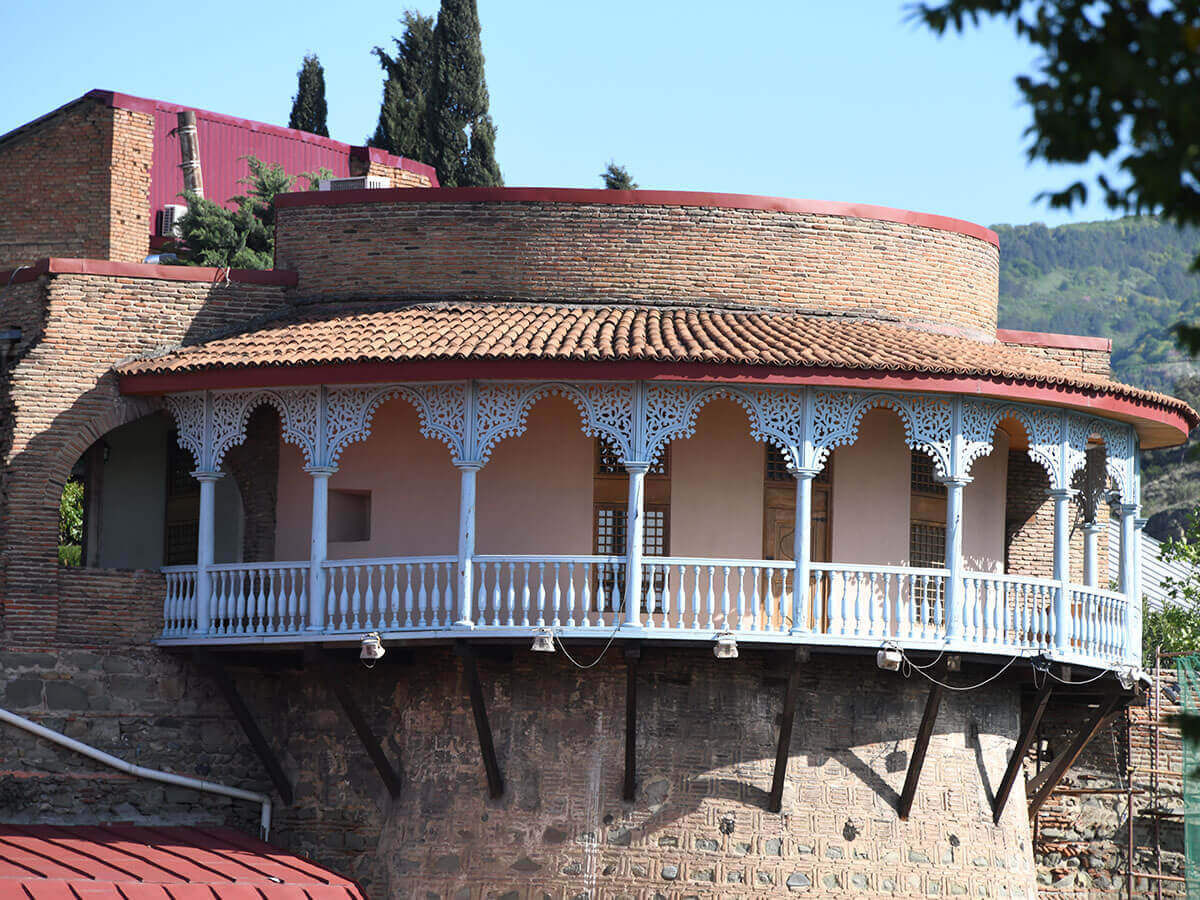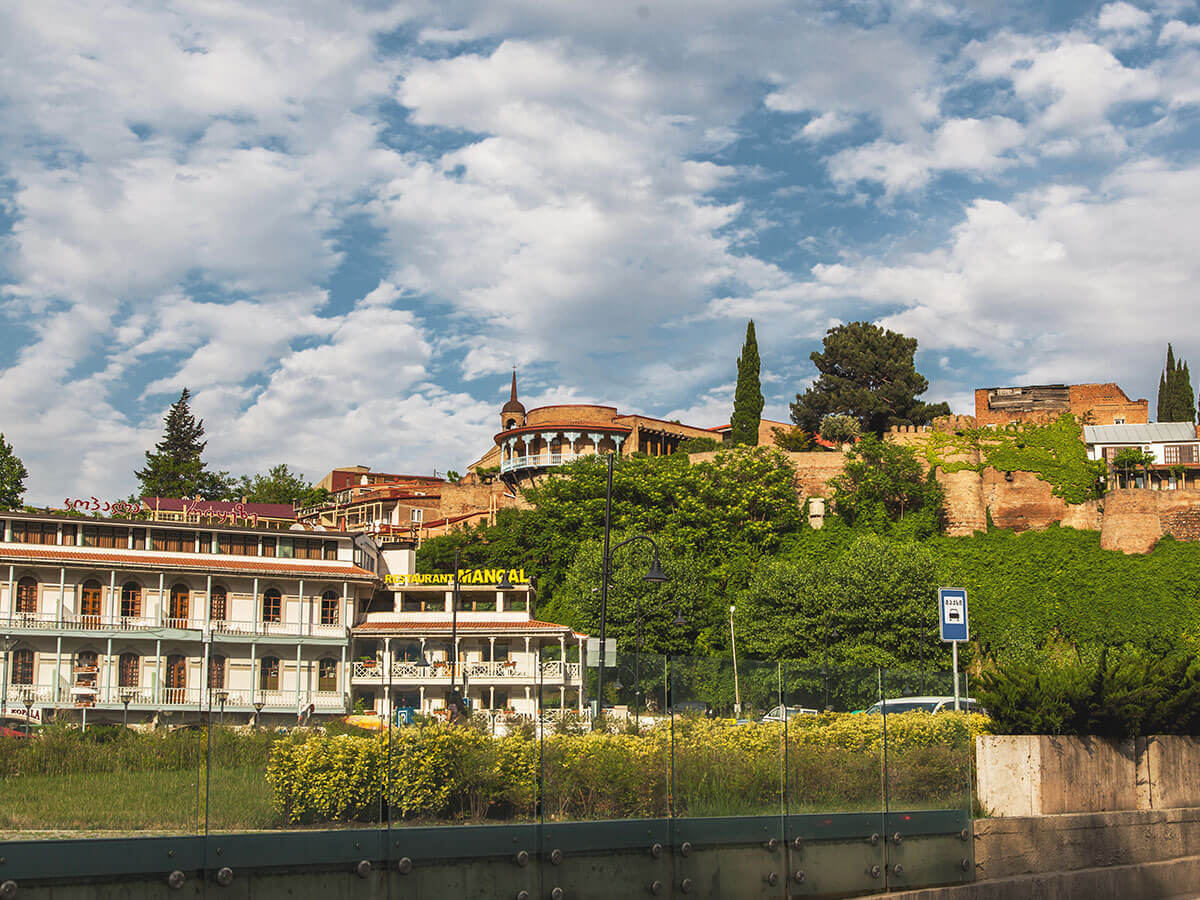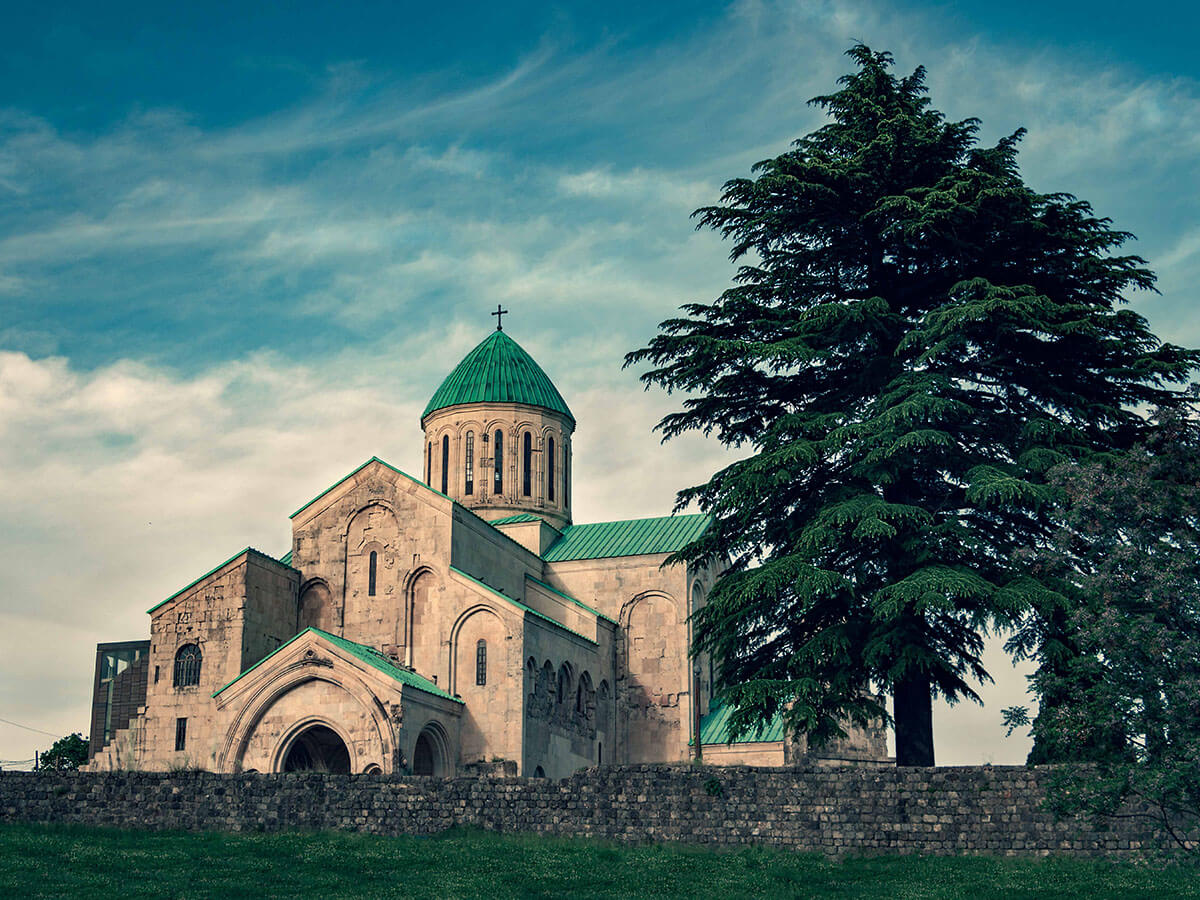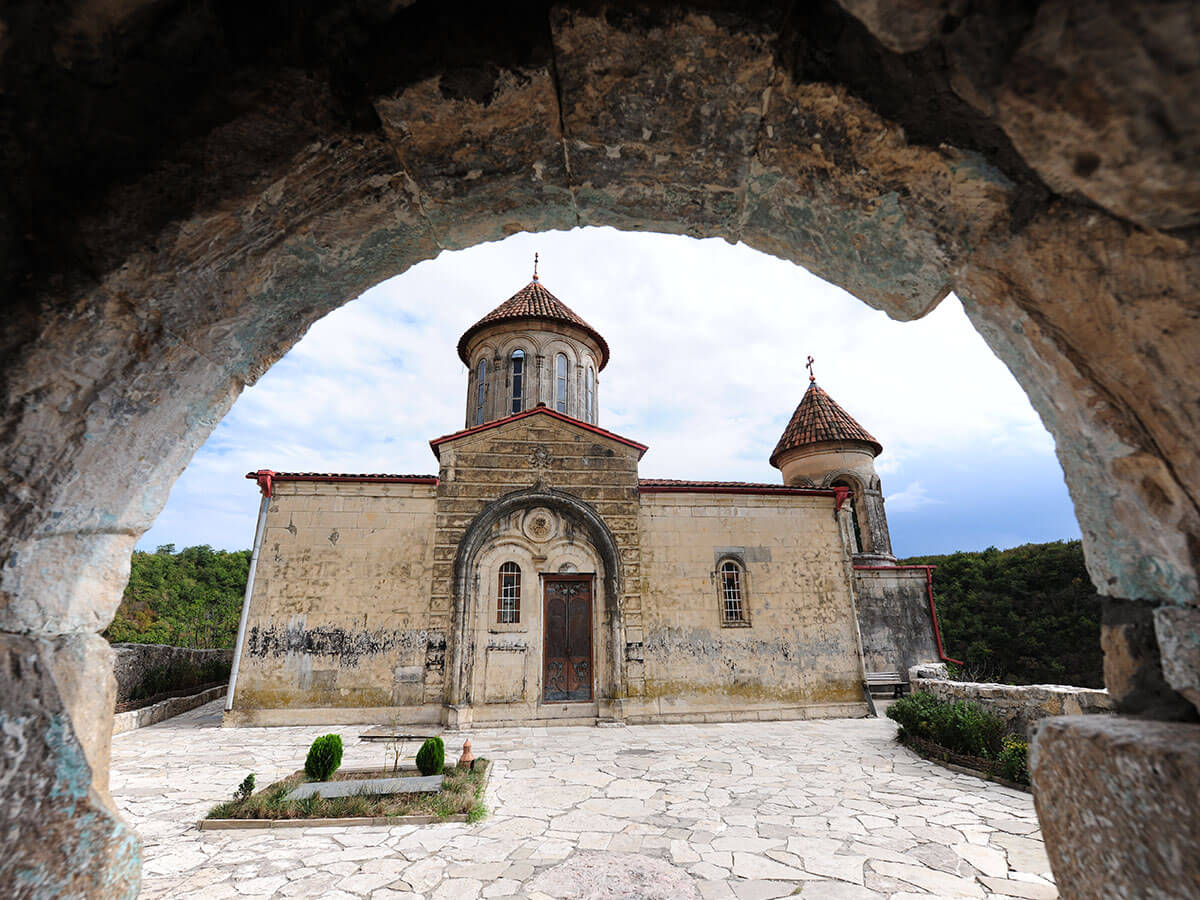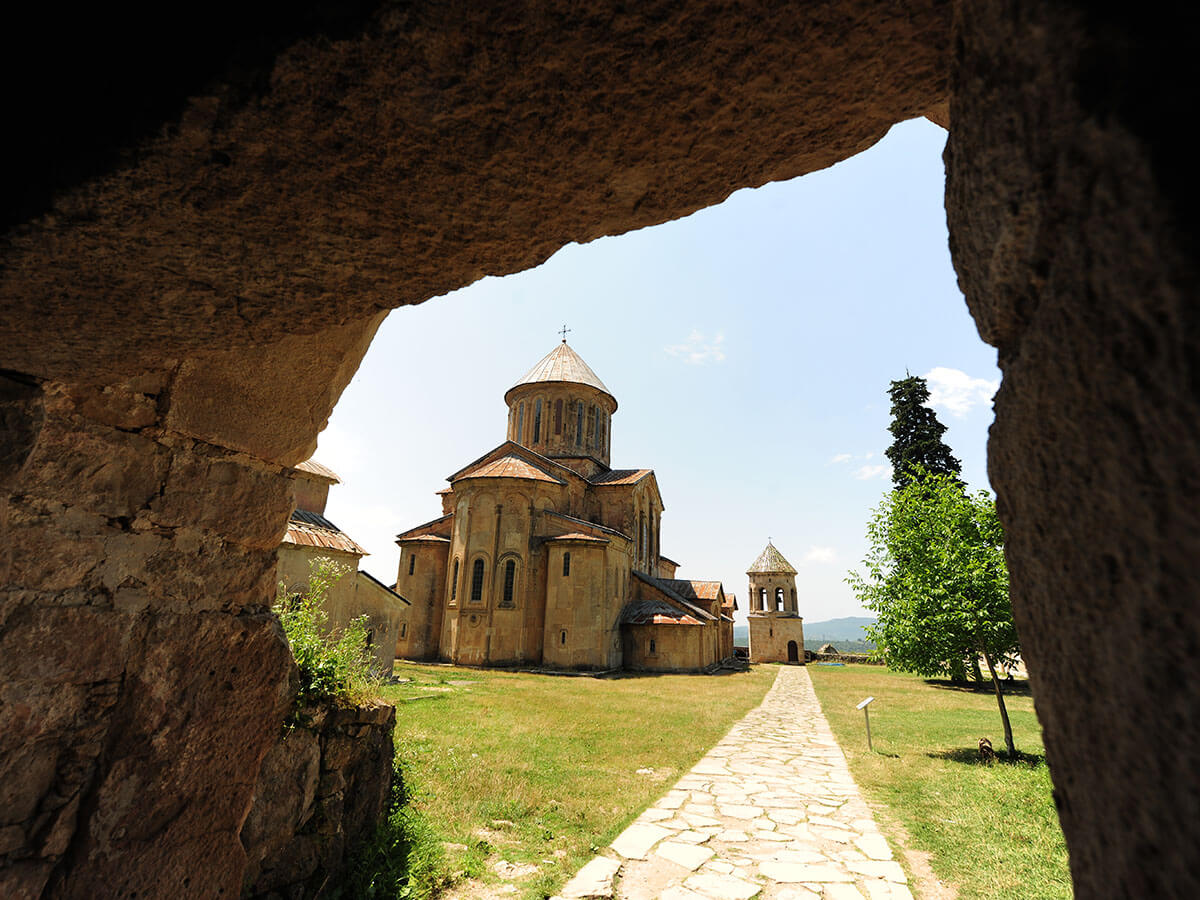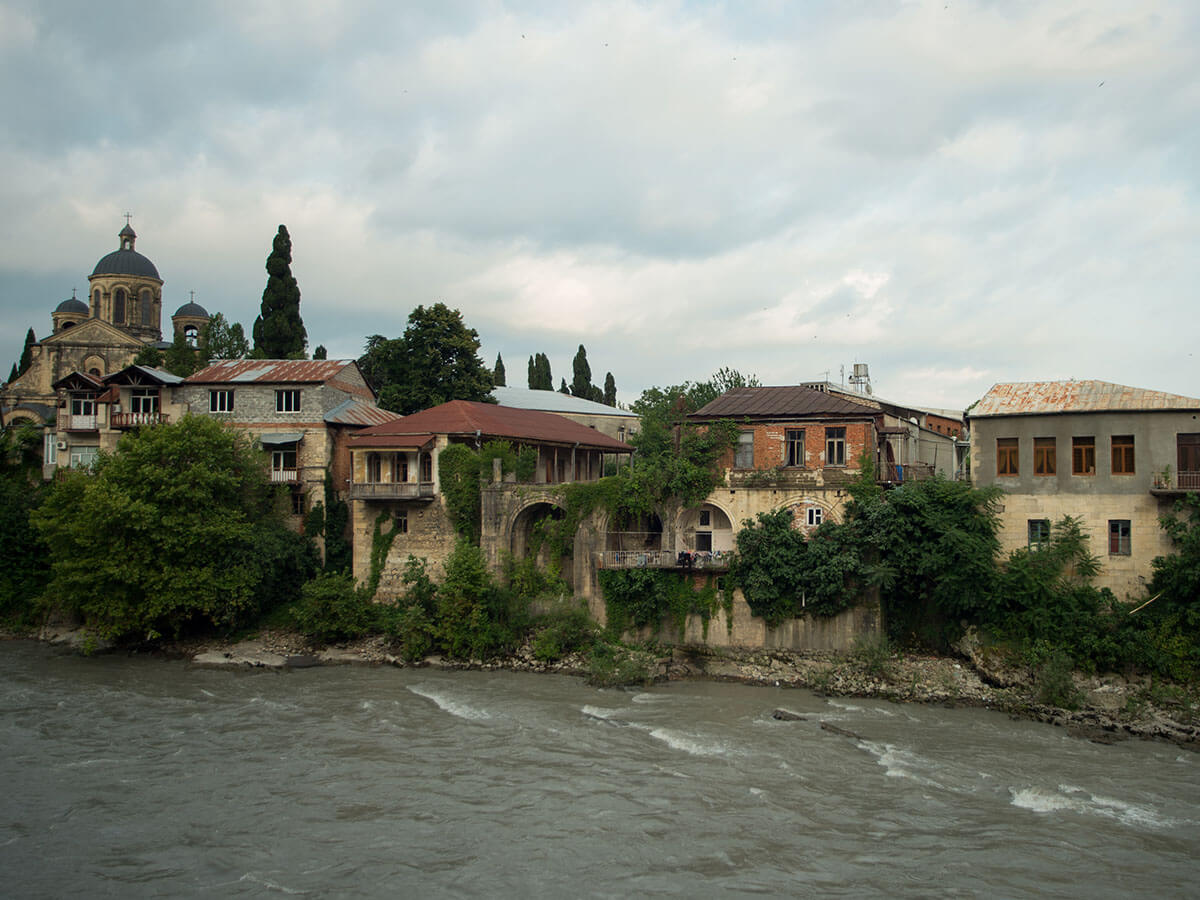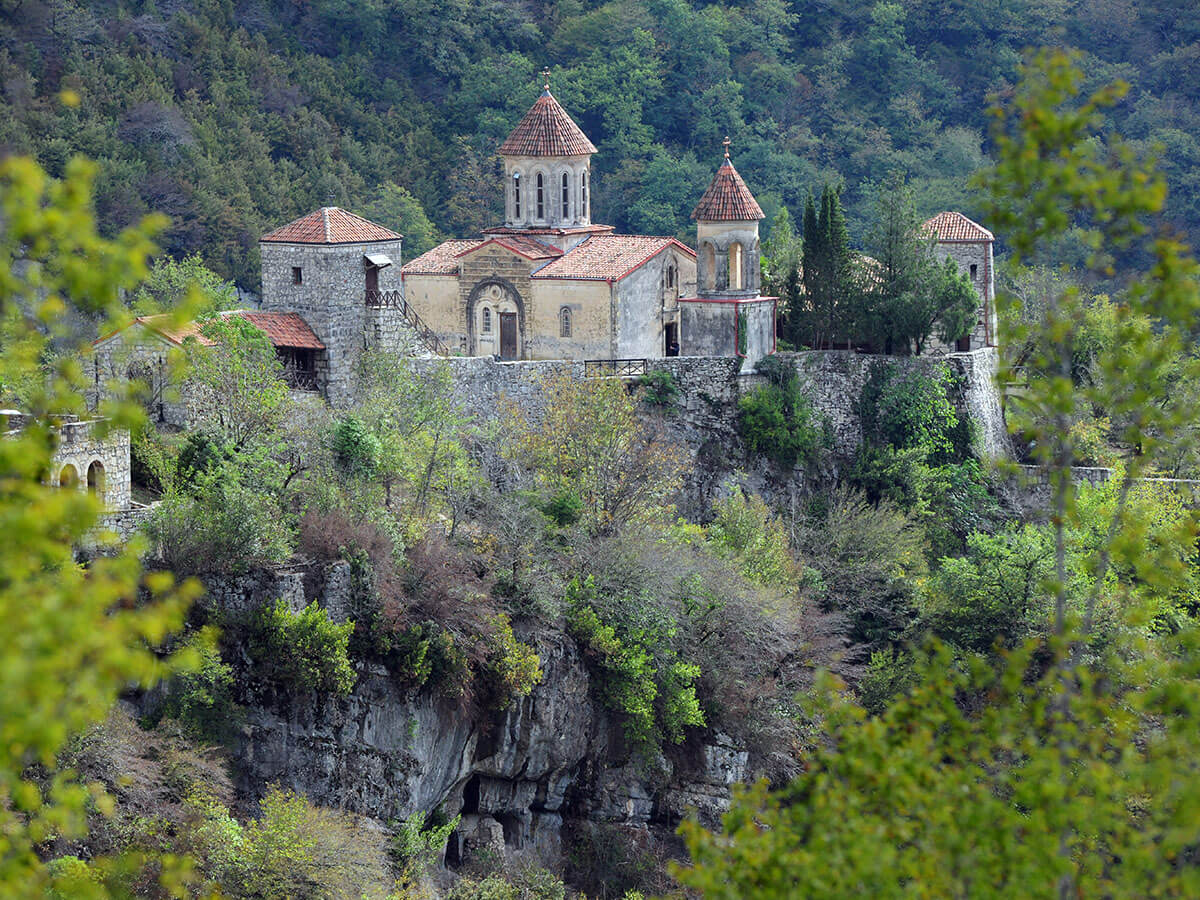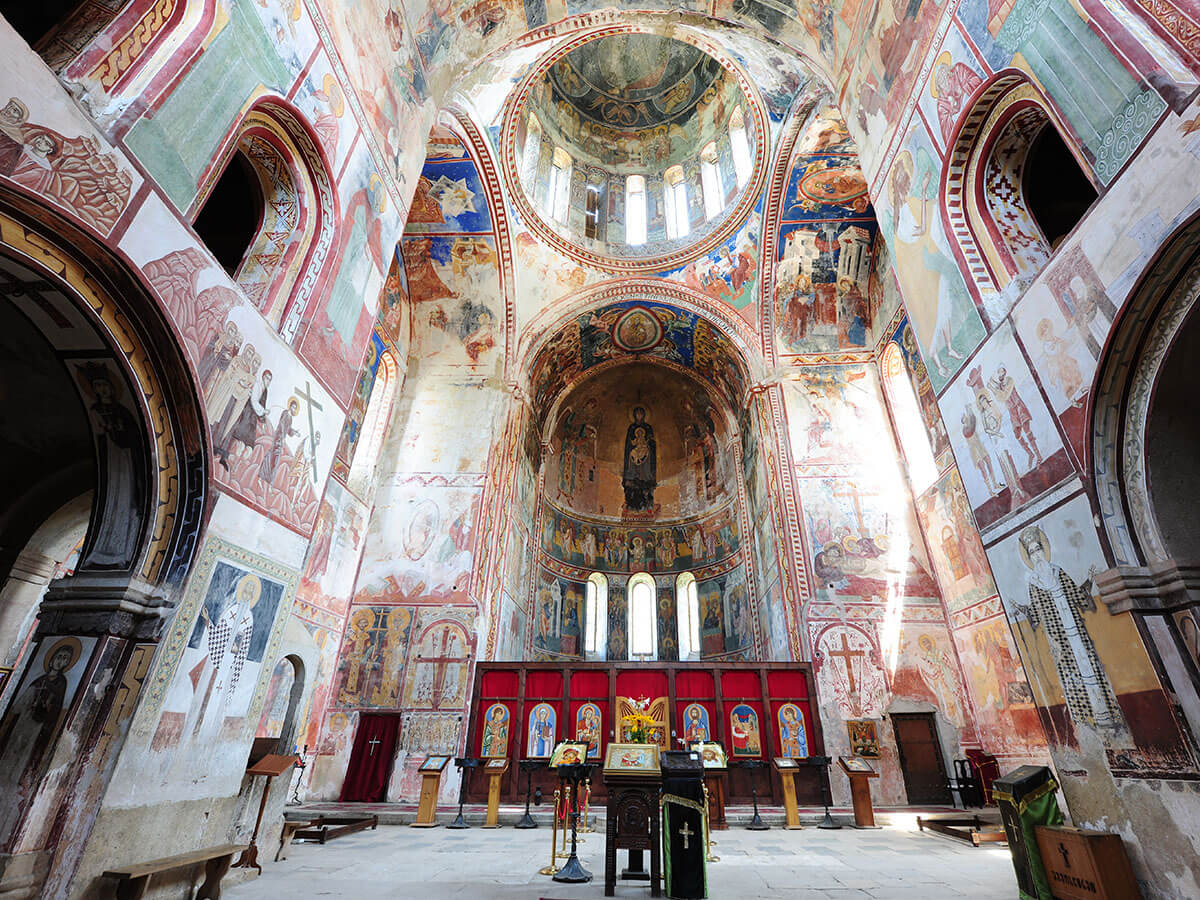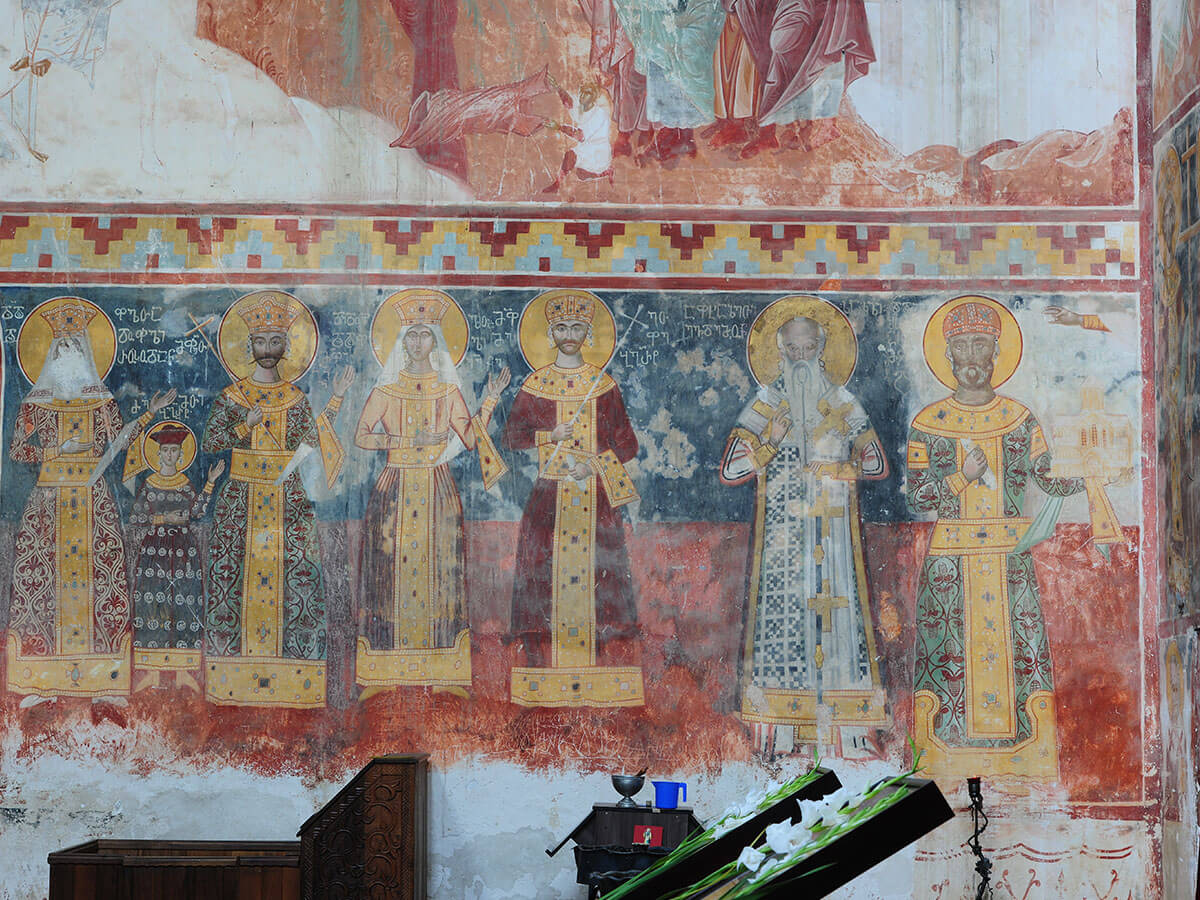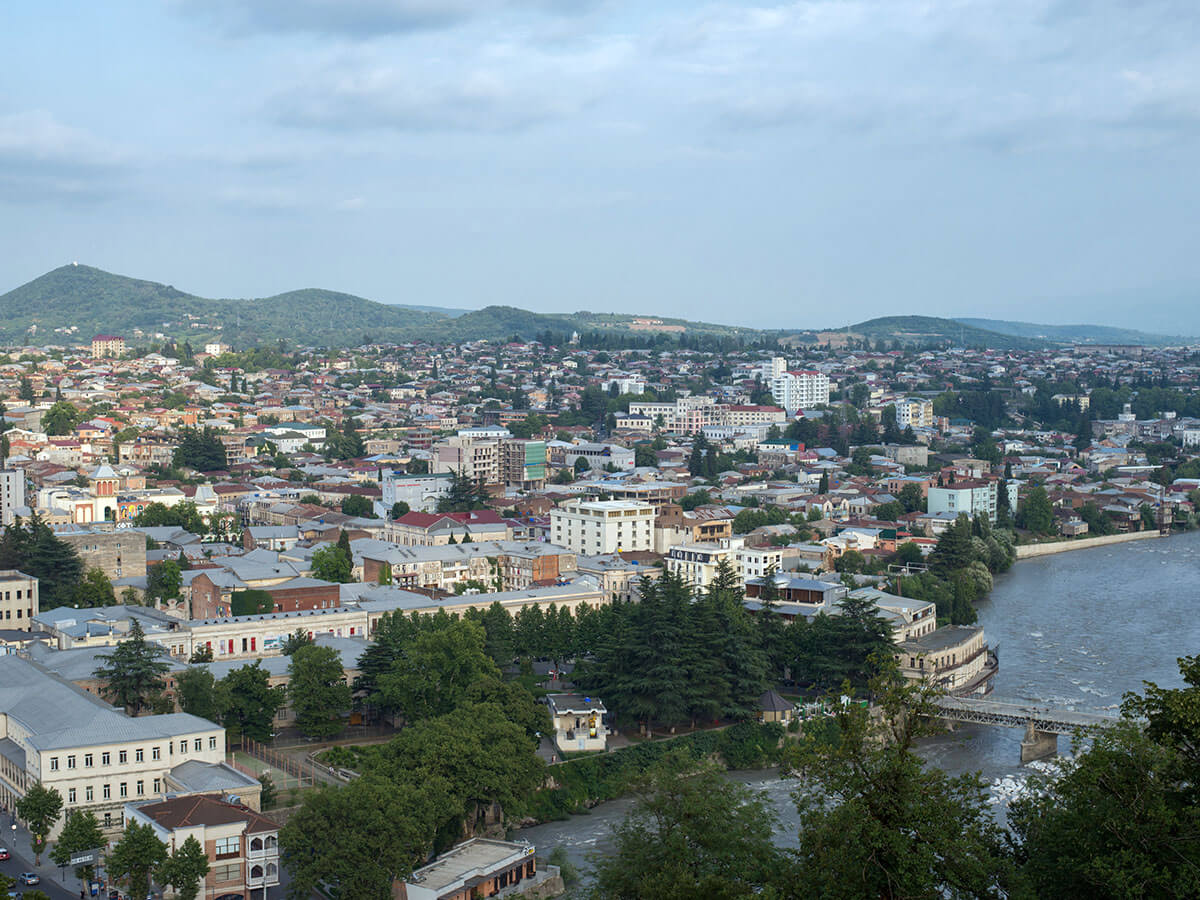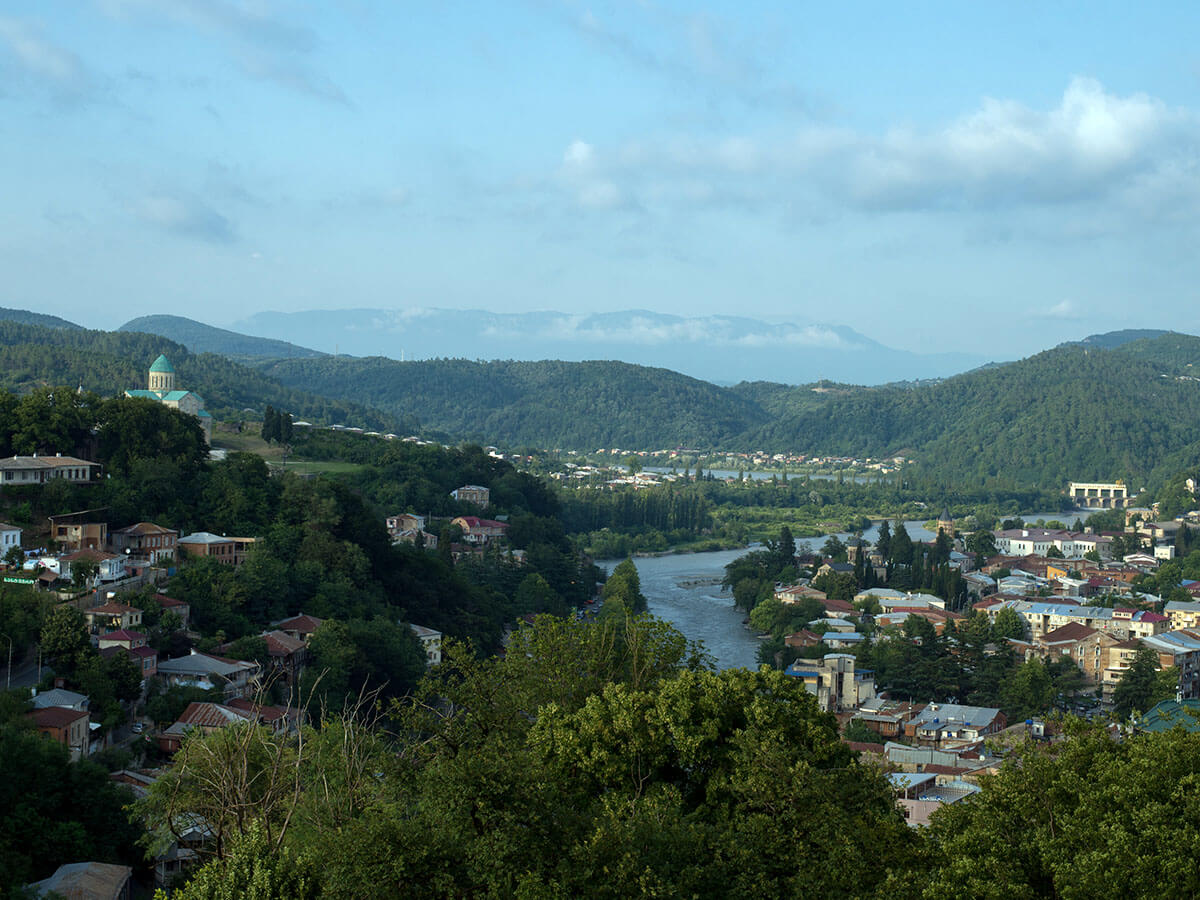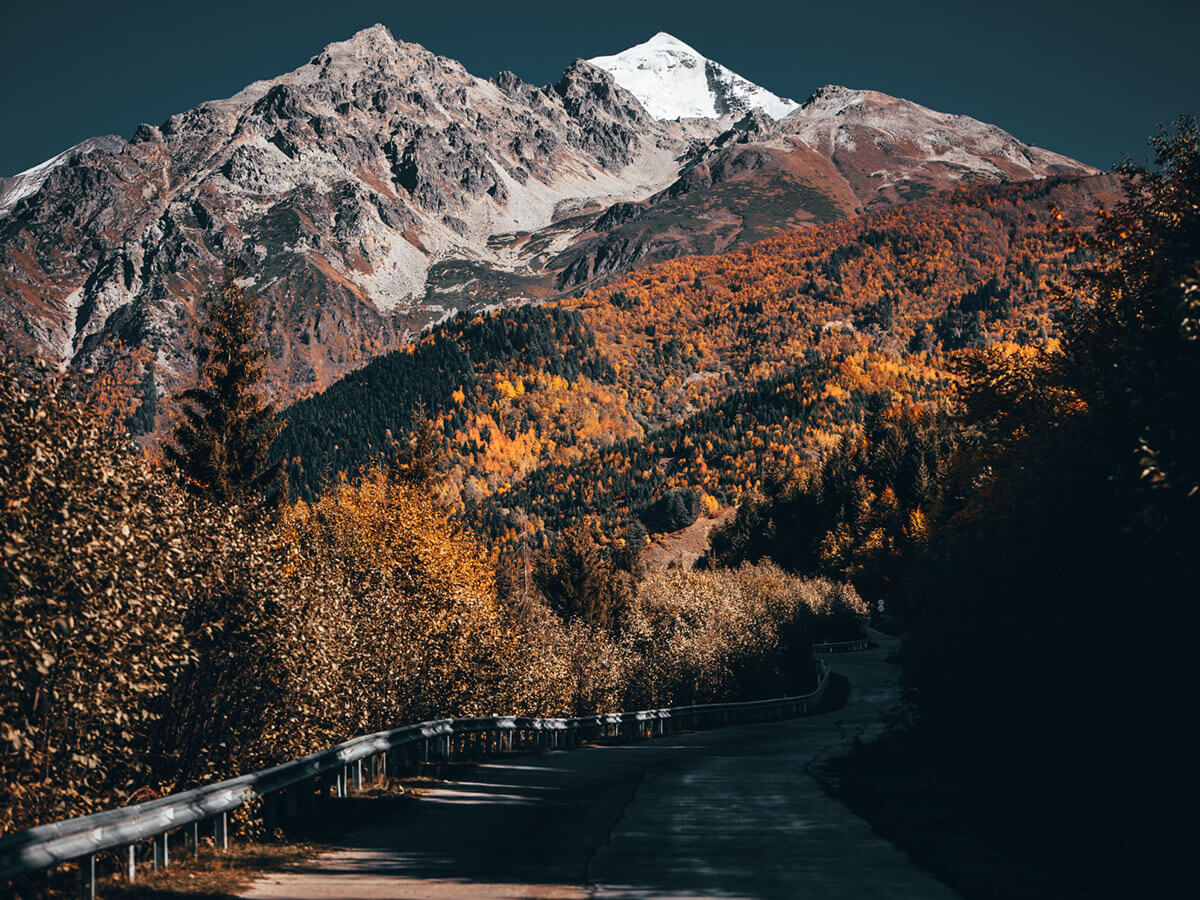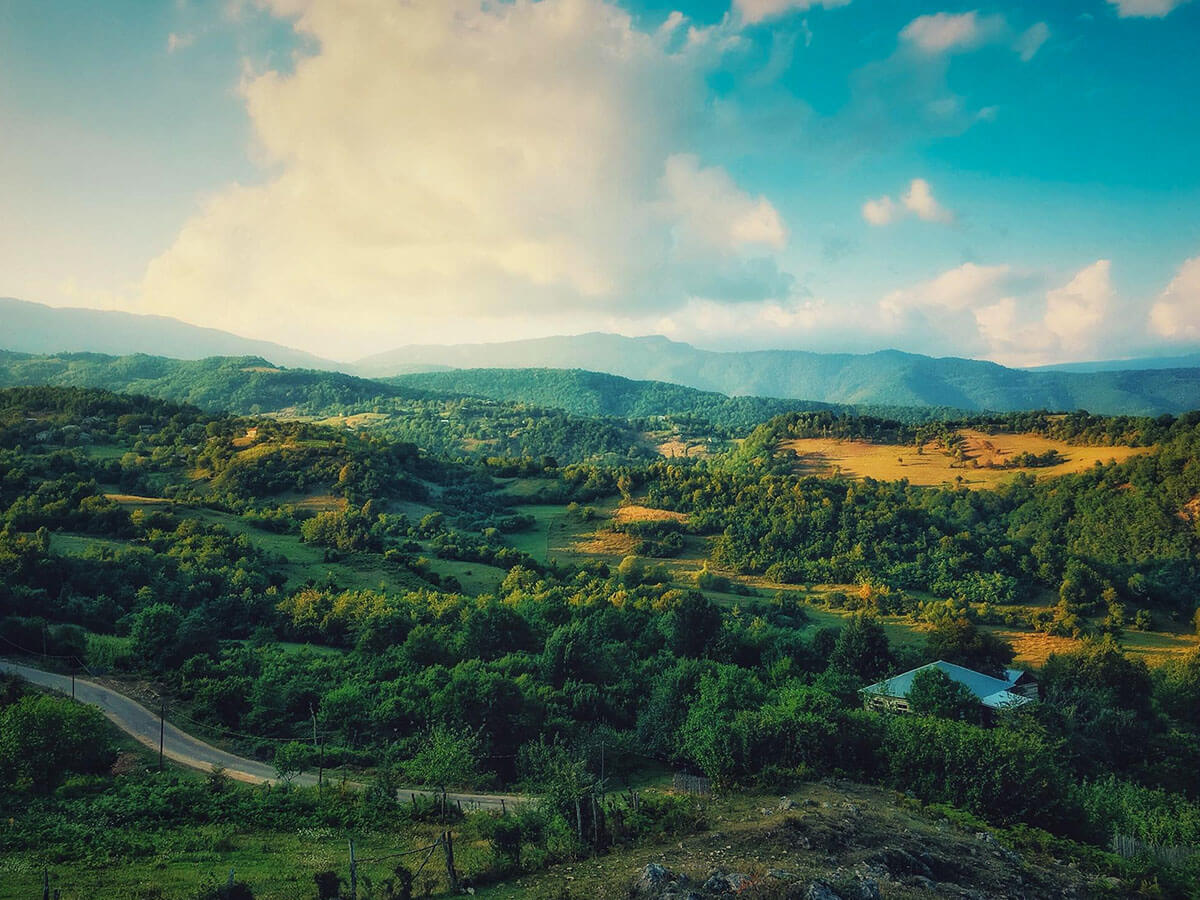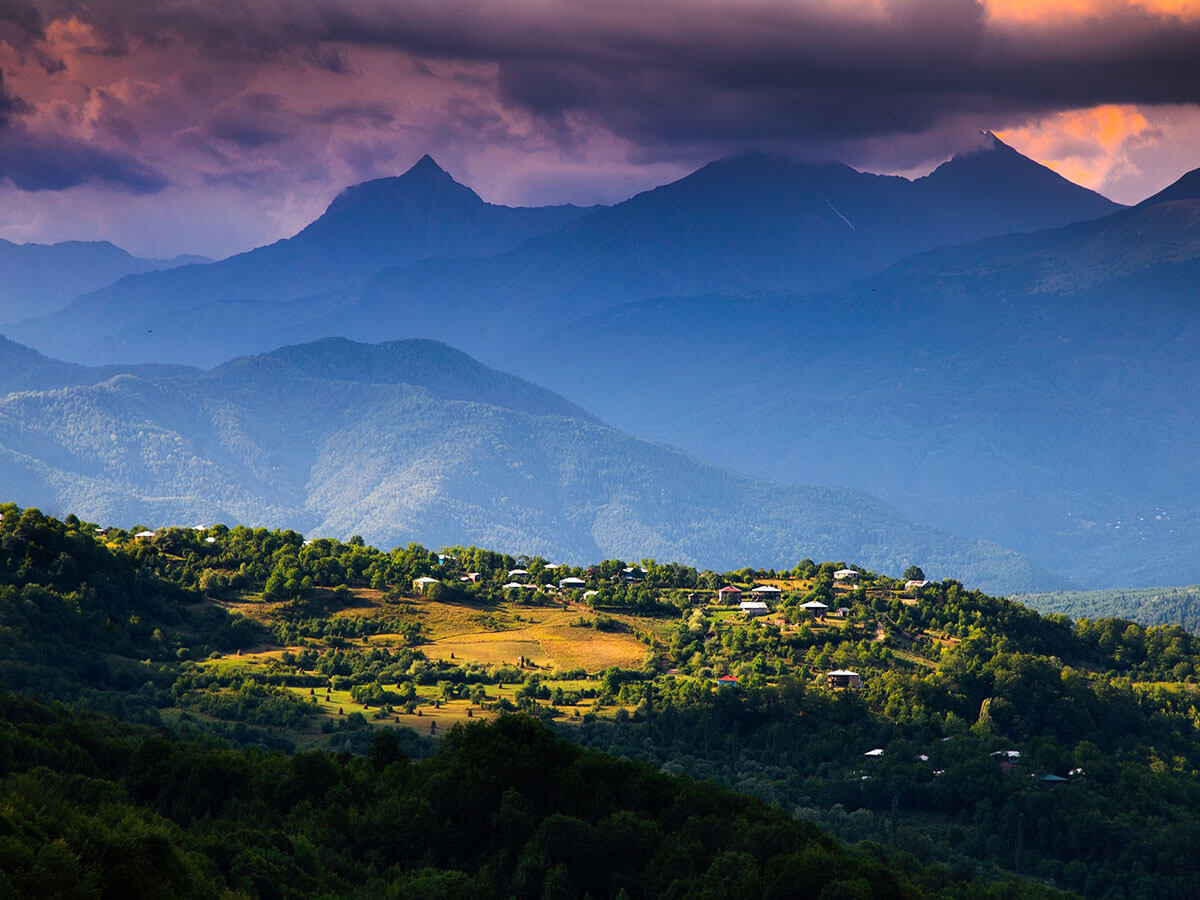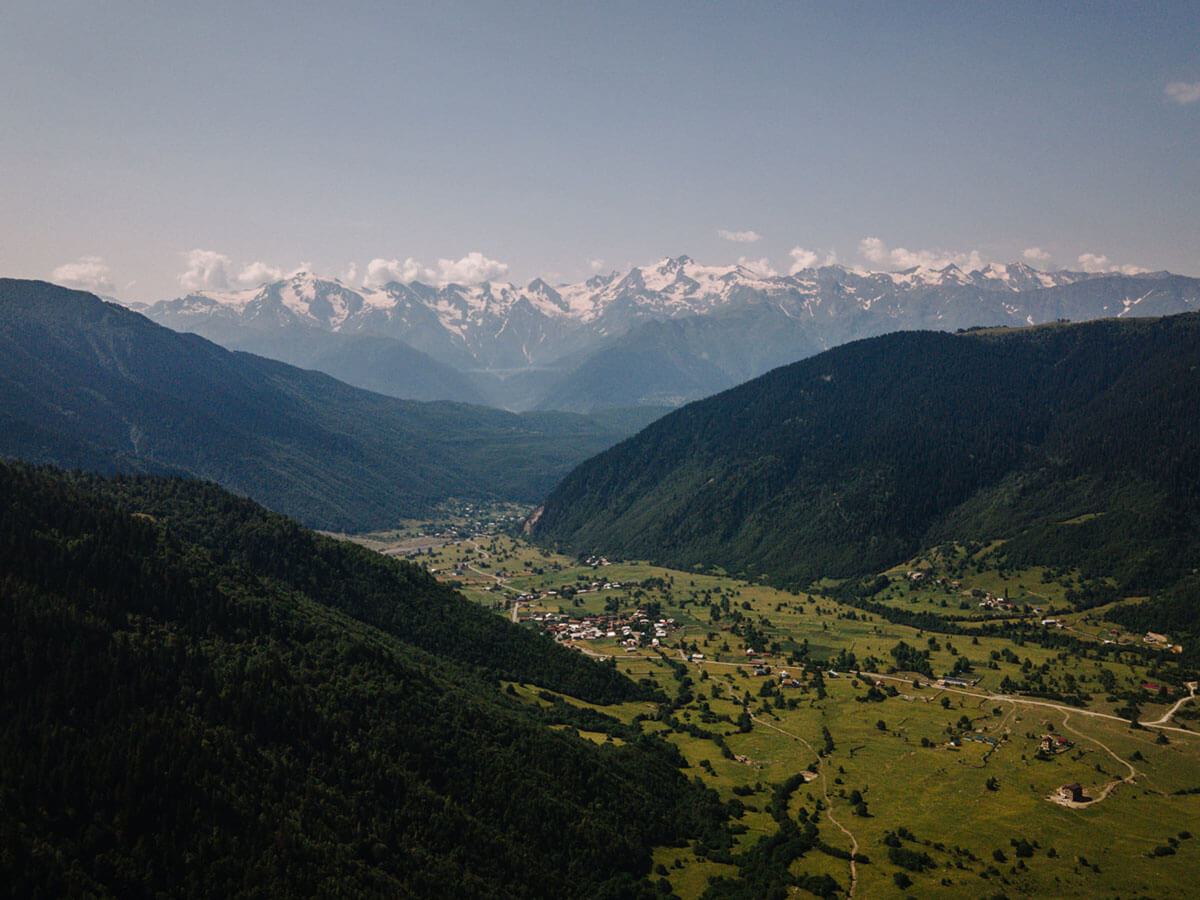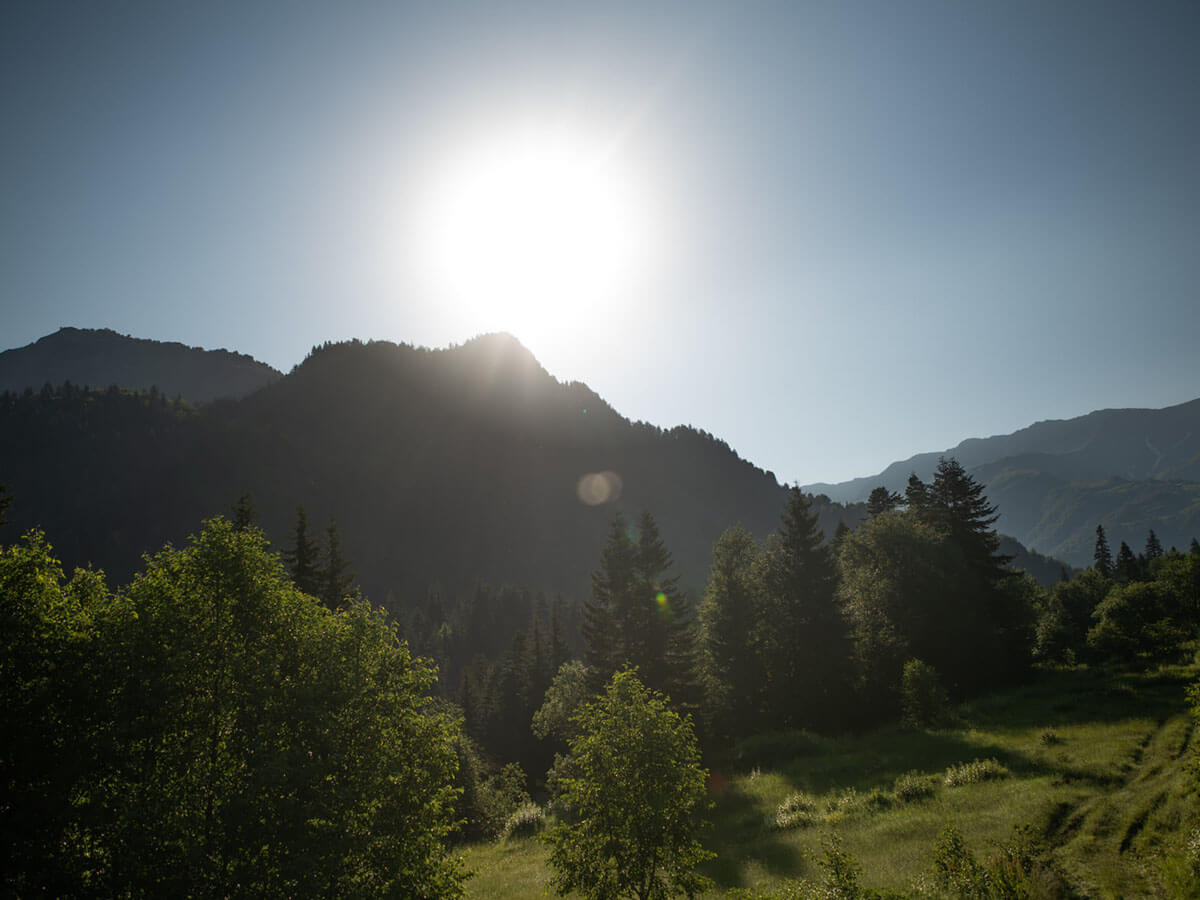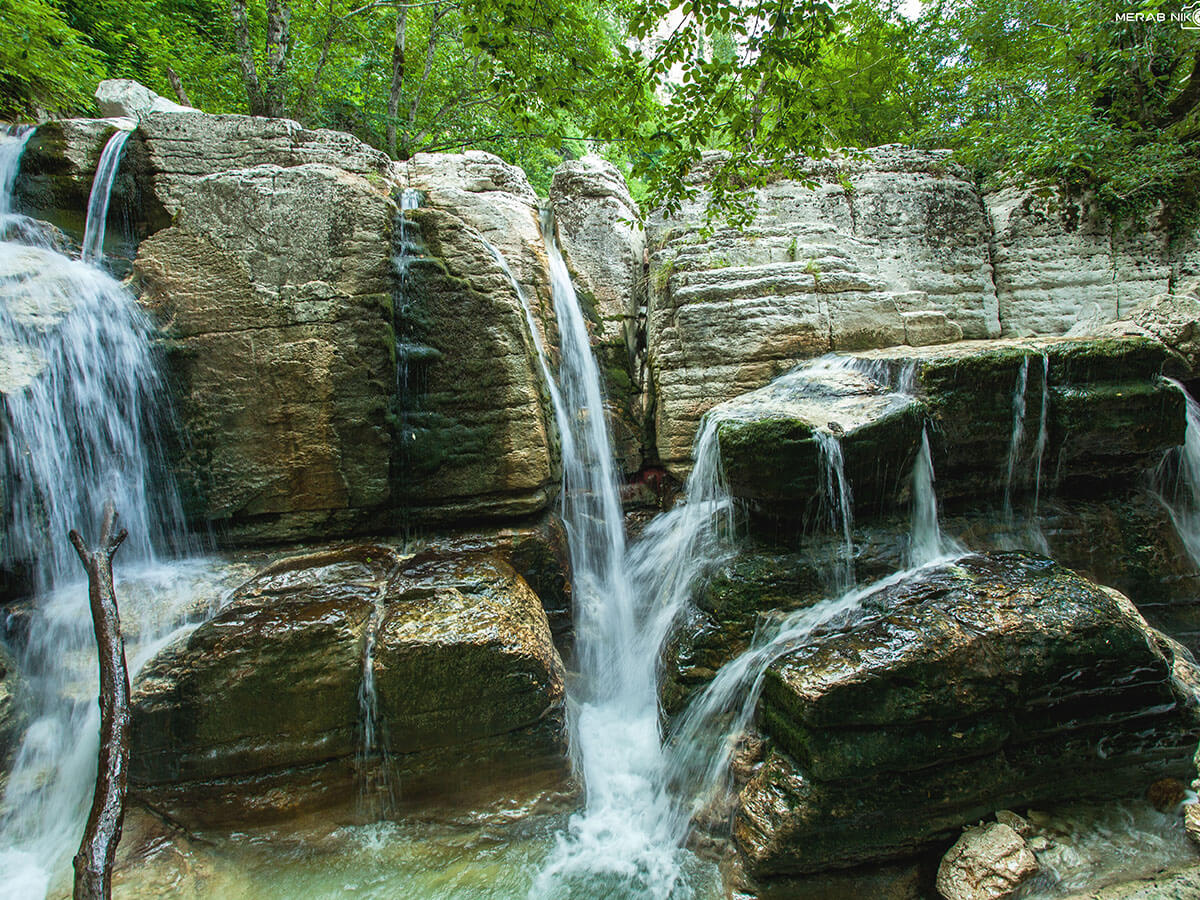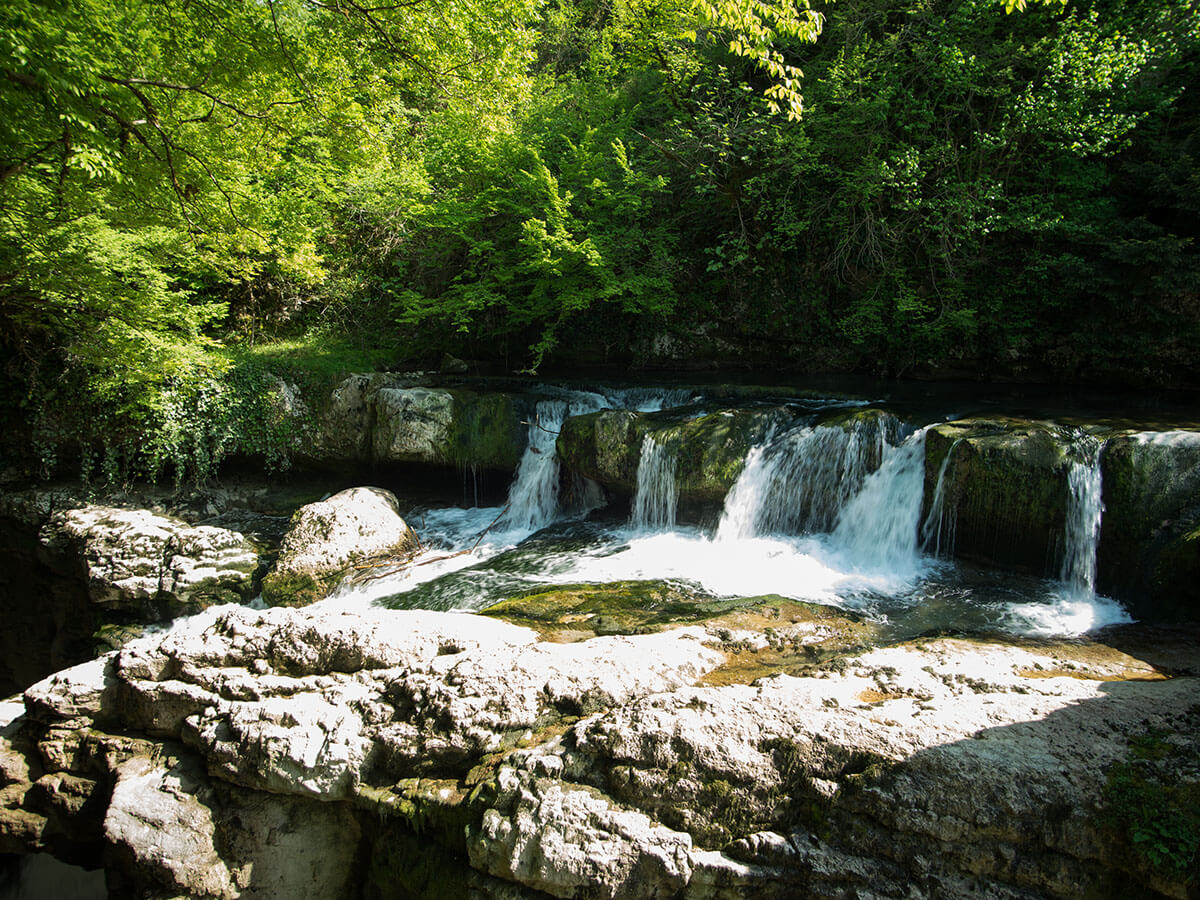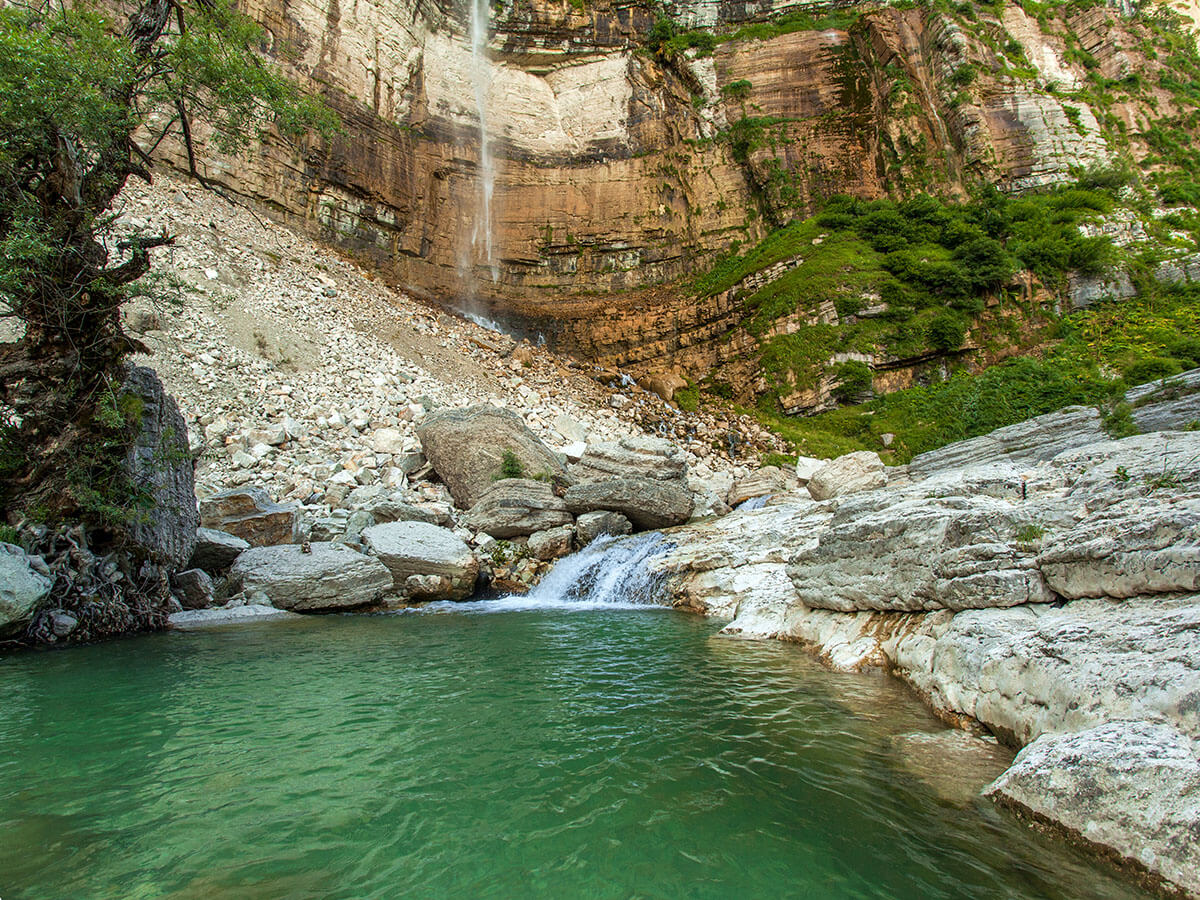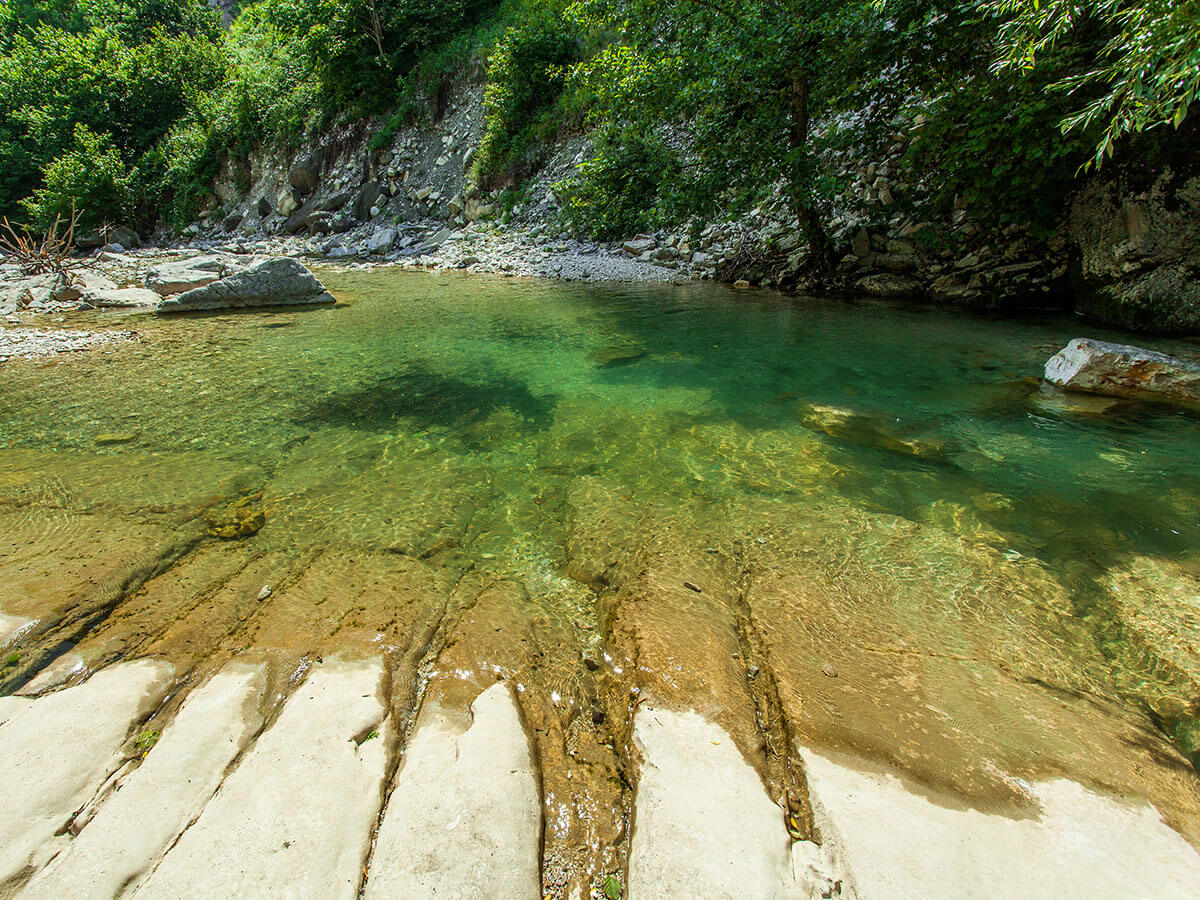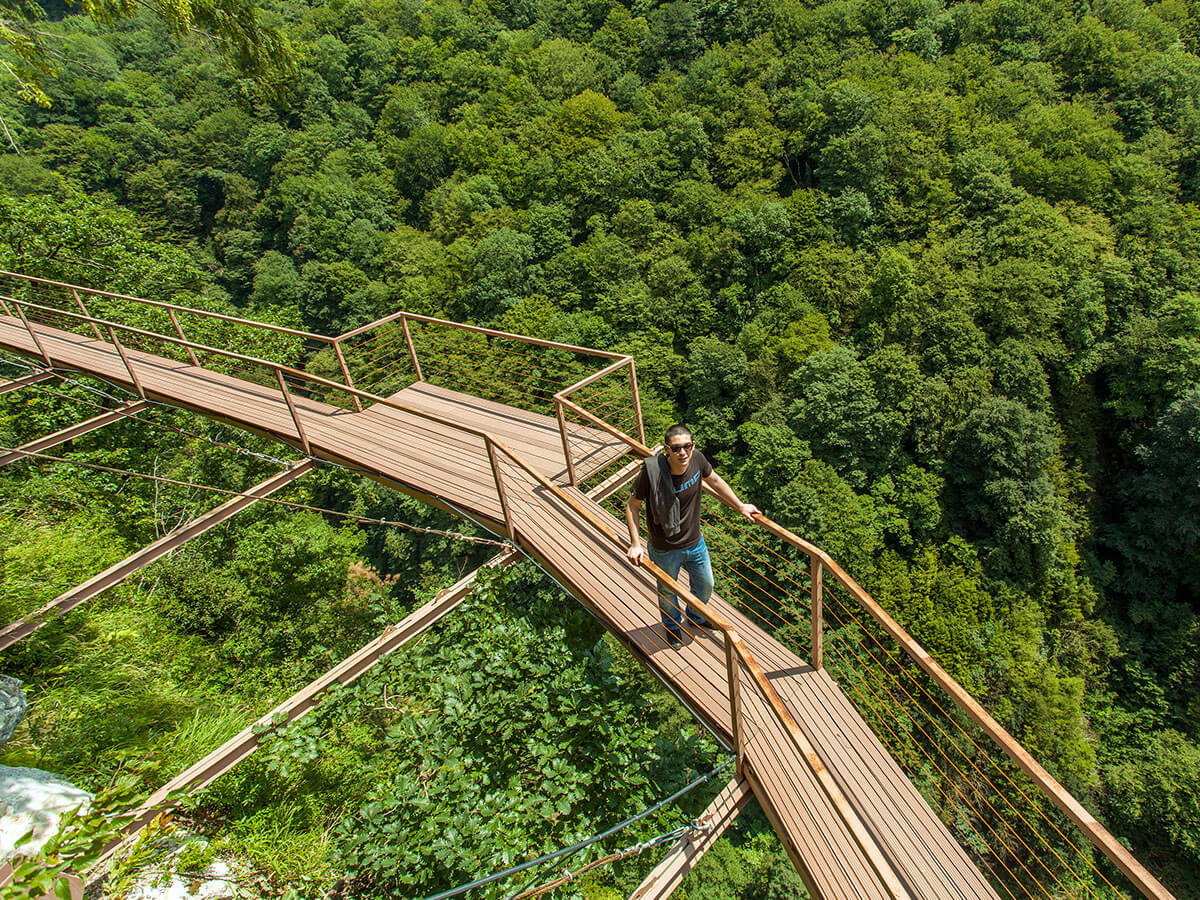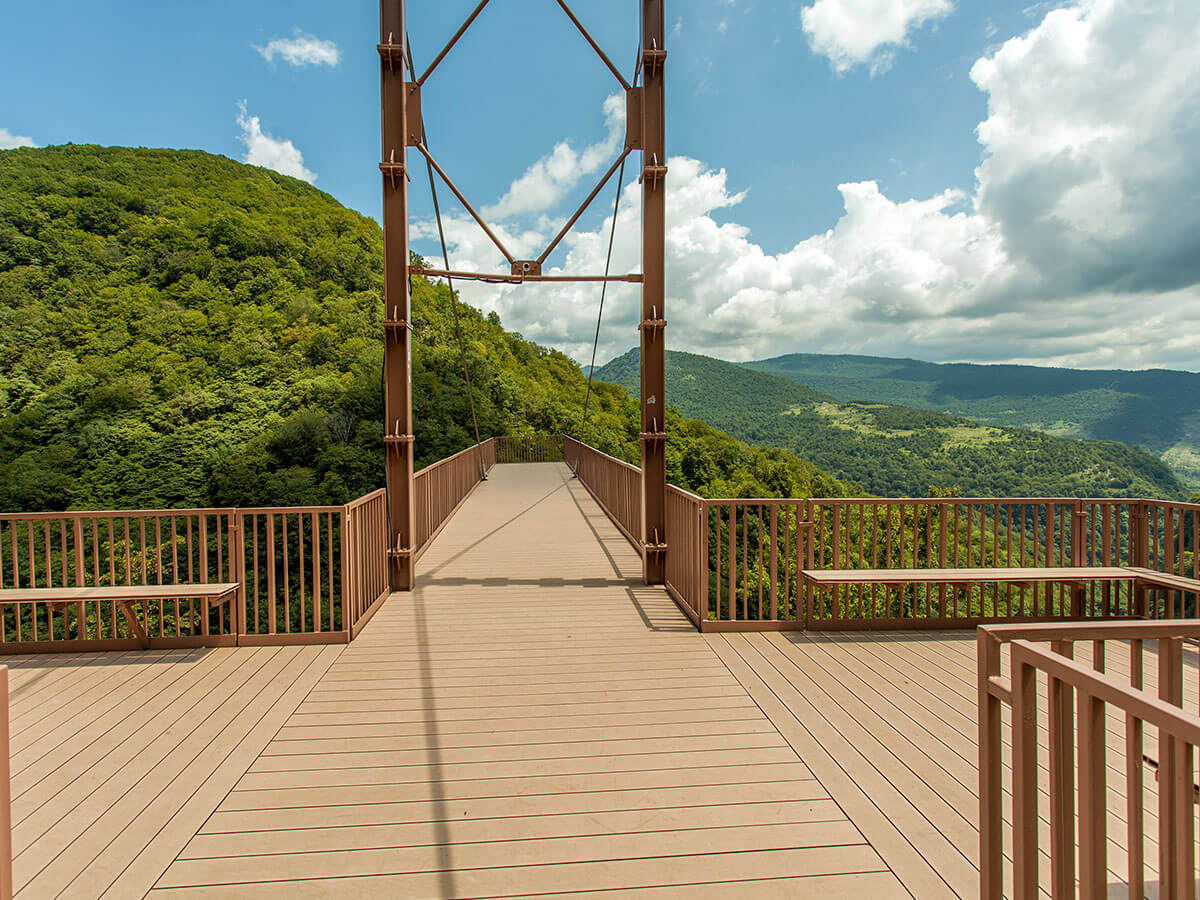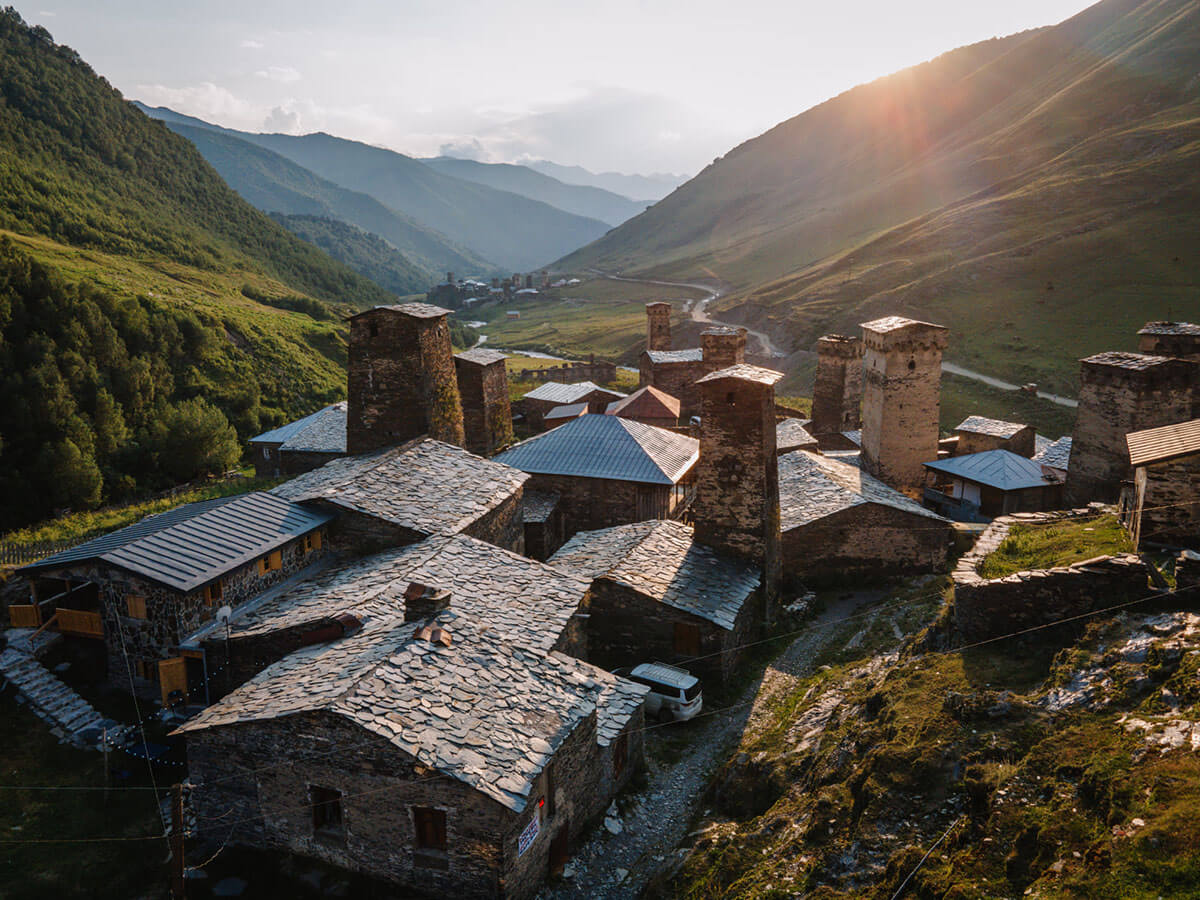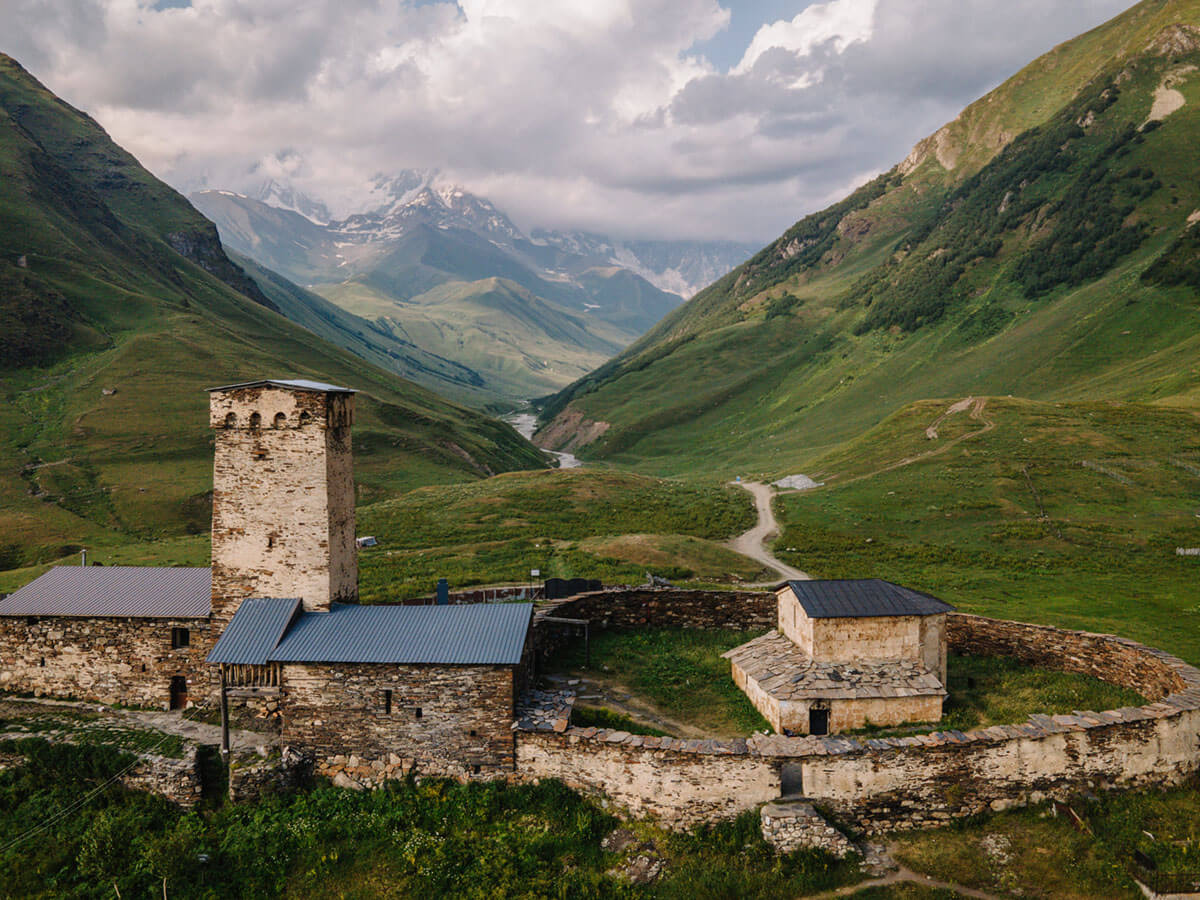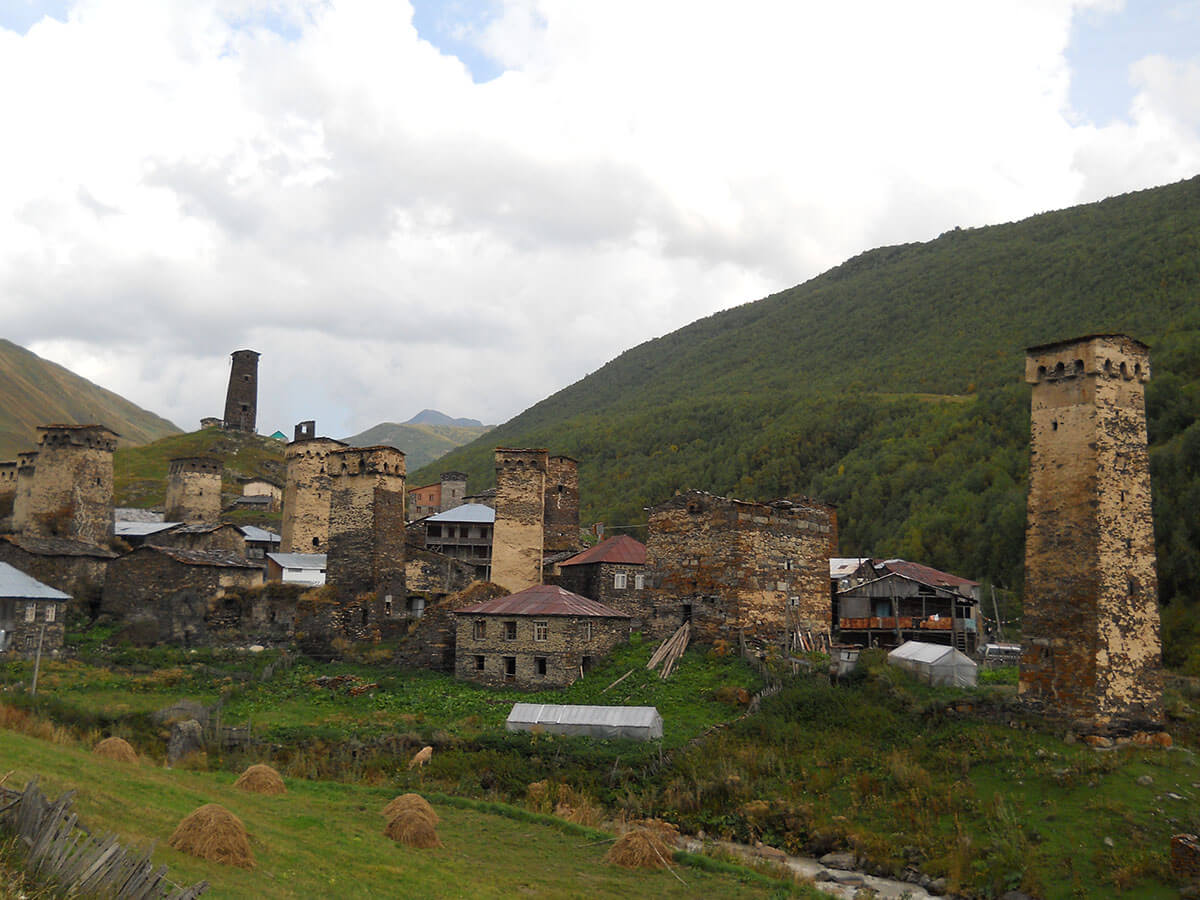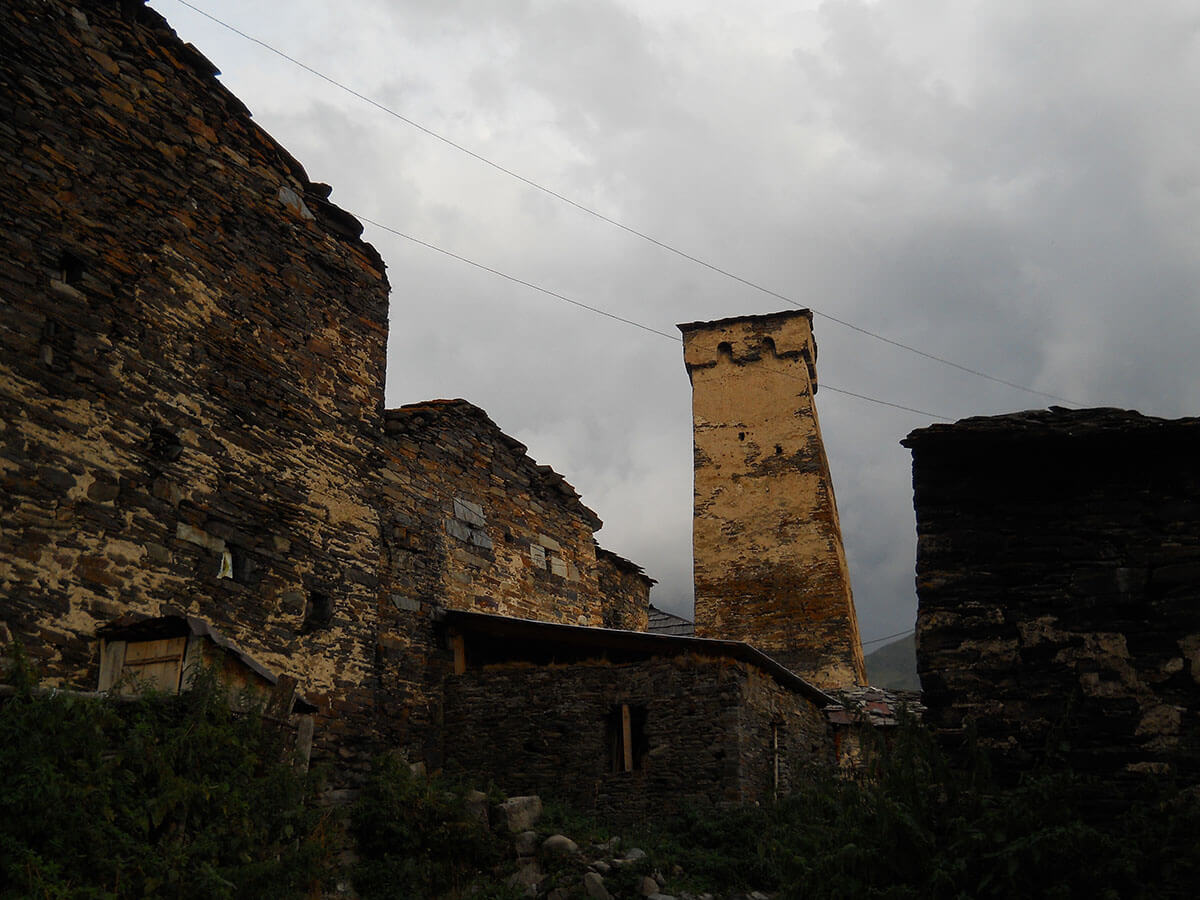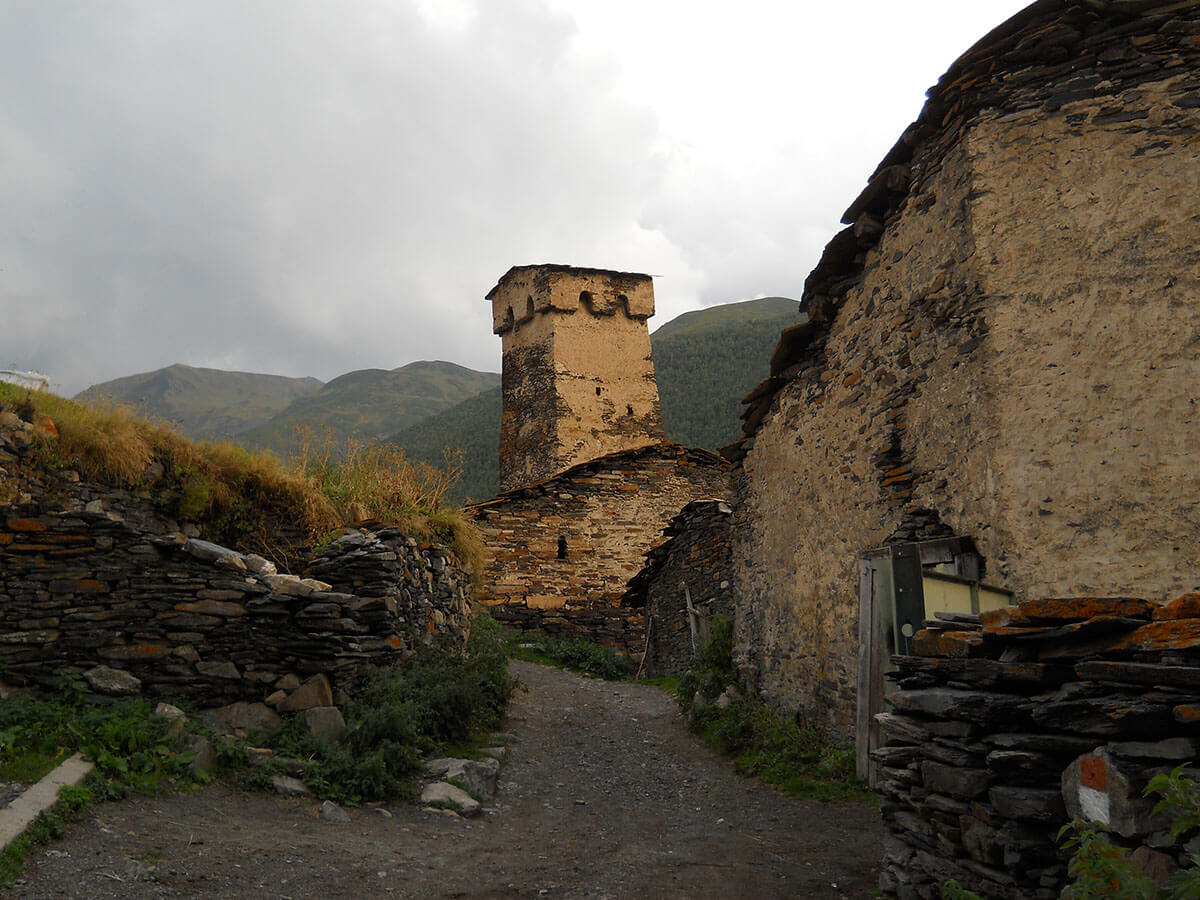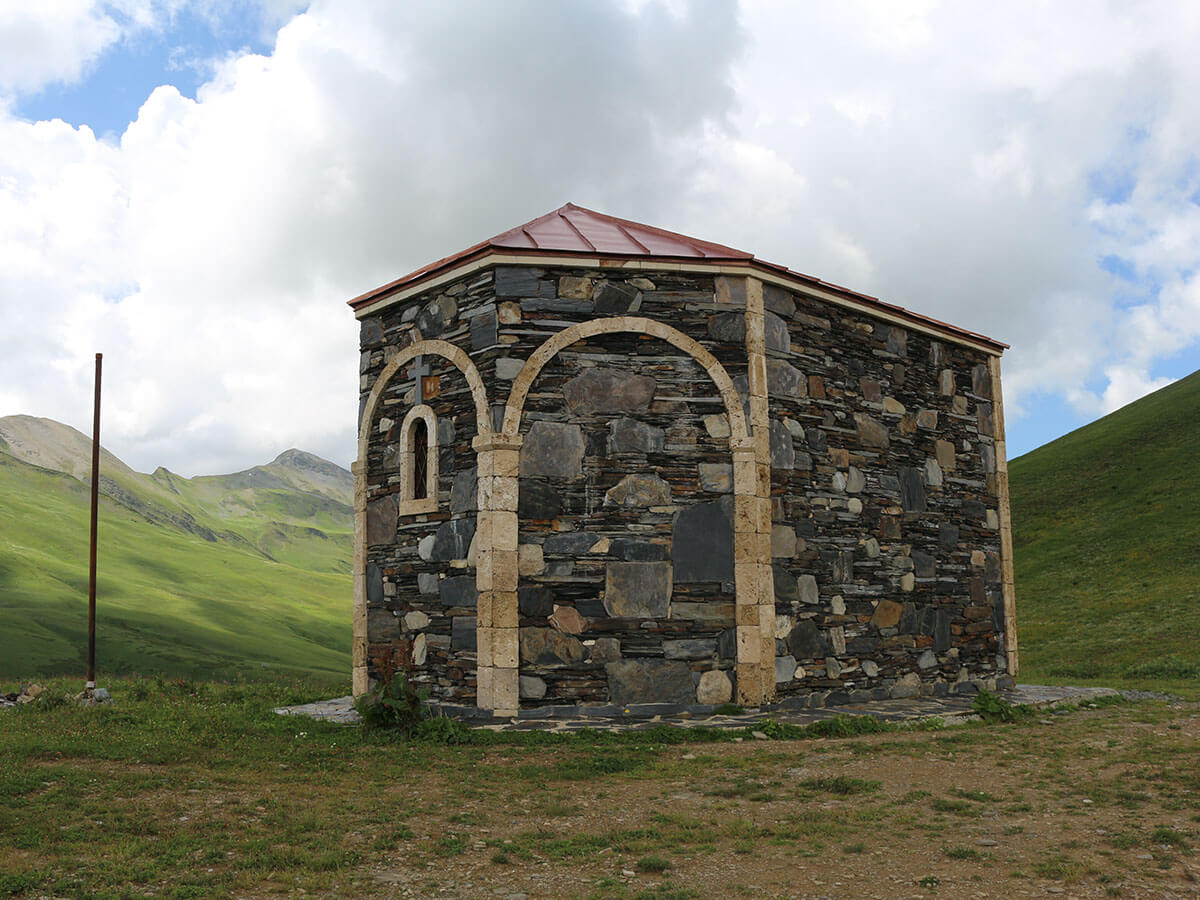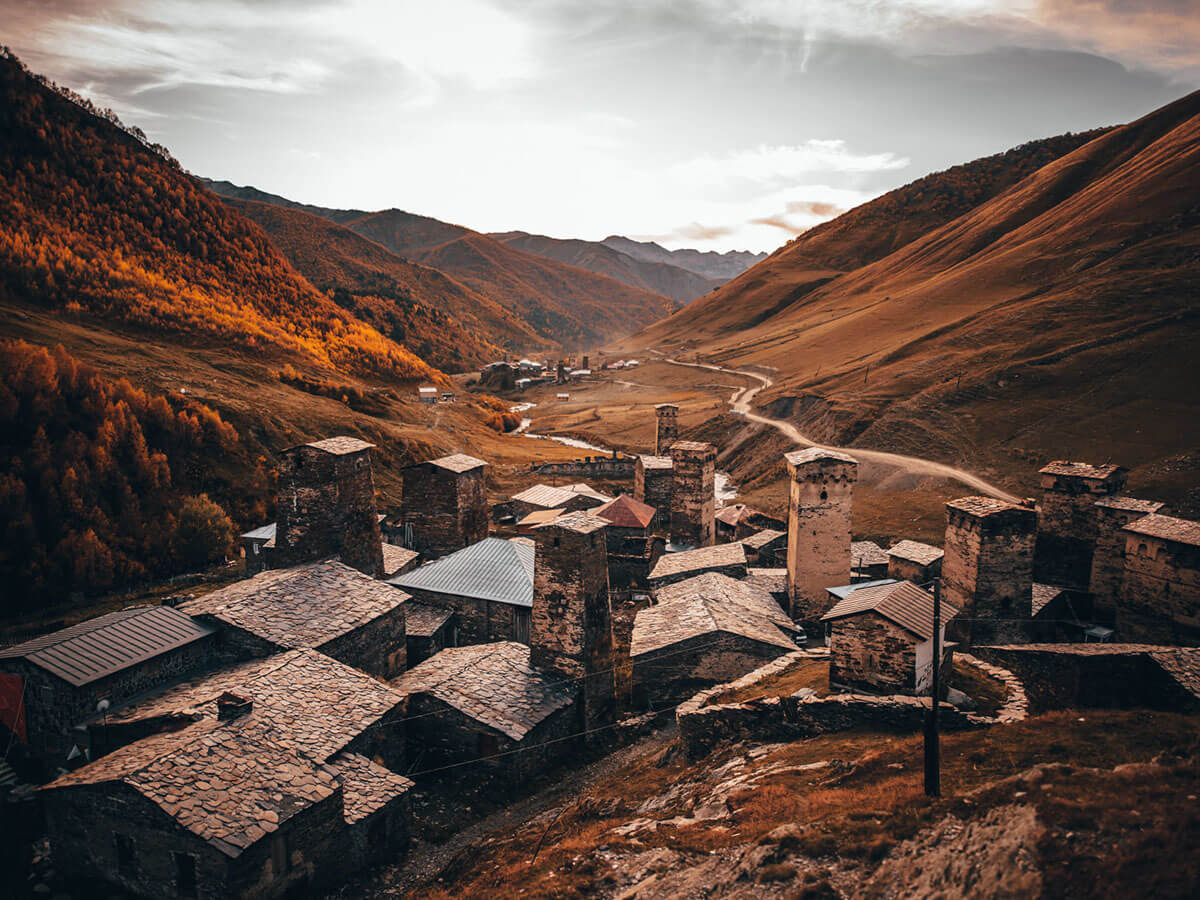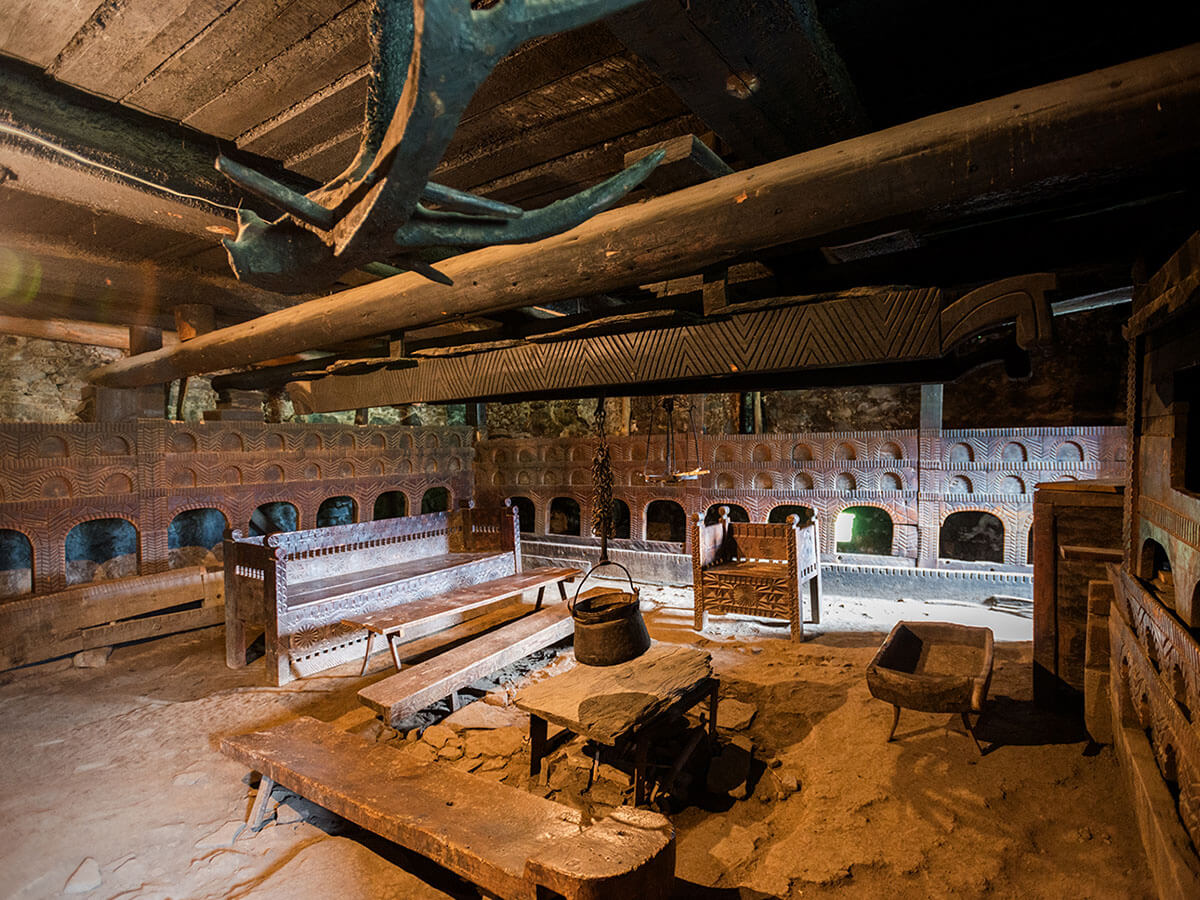The whole Georgia in one tour
The Heart of Georgia-A central historical part of the capital of the country - diverse and tolerant ″Old Tbilisi″ where the Eastern and the Western cultures meet, the center of the Caucasus. Here, you will learn how Tbilisi was founded, how the Tbilisians have lived for centuries and what makes the city so remarkable. You will see important sights, walk in the streets of historical districts and listen to the stories about the city.
Kutaisi is a colorful city of Georgian intelligentsia, poetry, music, theater, humor and friendship.
Racha - The mountainous land of the ″fastest″ Georgians - leisurely Racha residents, immersed in velvety greenery.
Samegrelo - ″Odabade″ - the place of your birth where a person begins to think differently about life, Ancient Colchis culture, Land of soulful songs, delicious spicy dishes.
Svaneti - Freedom-loving Svaneti is the land of family towers, majestic mountains, the richest Christian culture preserved in the mountains, sacred legends, brave and fearless.
The monument to King Vakhtang Gorgasali, Metekhi Church (XII c.) standing on the cliff, Abo Tbileli Church (XX c.), River Mtkvari, One Hundred Thousand Martyrs’ Bridge, Meydan Bazaar, Jean Chardin Street, Tbilisi Karavanserai Museum, Sioni Cathedral where the Cross of St. Nino the Illuminator (VII c.) is kept, the Anchiskhati, which is one of the oldest churches of Tbilisi, where the Christ’s non human-made Icon (V c.) is kept, Revaz Gabriadze’s puppet theater, Freedom Square - the border between Old and Bourgeois Tbilisi, the Tbilisi Catholic Church (XIX c.), Gudiashvili Square, the Great Synagogue of Tbilisi (XX c.), the Glass Bridge, the cableway, the monument of ″Mother Georgia″, Narikala Fortress and the Botanical Garden, Tbilisi Mosque (XIX c.).
Abanotubani and Legvtakhevi, Mtatsminda with the cell (VI c.) cut in the rock and church of Assyrian Father St. David of Gareja (XIX c.); Funicular, Mtatsminda Pantheon of Writers and Public Figures, the grandiose Holy Trinity Cathedral (XX c.), Rustaveli Street - the central avenue of the capital; evening program: we will eat Georgian dishes at the restaurant and watch Georgian national dances.
Central Park, so-called ″Kutaisi Parliament″, Drama Theatre, historical building of School #1 - the ″Cradle of intellectuals″ (XIX c.), the royal palace ″Golden Canopy″, White Bridge, Red Bridge, Chain Bridge, the Third Gymnasium (XIX c.), the Jewish district of the city, the Baroque and Gothic Church of Our Lady in the French district (XIX c).
The Bagrati Cathedral of the Dormition, the symbol of the unity of Georgia, dating back to the 10th century, stands on Ukemireoni Mountain. You can meet the colorful personalities of Kutaisi, whom the city residents immortalized in an original way by erecting their monuments.
Motsameta, the monastery named after Argveta princes, brothers David and Constantine, standing on the peninsula in the gorge of Tskaltsitela River, near Kutaisi.
Gelati Monastery and Academy – a medieval spiritual, cultural and educational centre, founded in the 12th century by King David Agmashenebeli, the most renown king of Georgia. The central church is the Cathedral of Our Lady, while the other church is of St. George. There is also a two-storey Cathedral of St. Nicholas.
Sataplia - Sataplia Forest Reserve and the Caves, where traces of dinosaurs are preserved. The Prometheus Cave - one of the most famous sights of Imereti near Tskaltubo city. It is the biggest cave in Georgia with 5 large halls, which can be accessed via a 1.5 km long road, as well as by a boat tour in the rest of the Cave.
The Nakerala Pass at an altitude of 1200 metres. St. George Curch on Tskhrajvari Pass, at an altitude of 1500 m.
Nikortsminda Church of St. Nicholas (XI c.), decorated with the XVI-century frescoes. The XI-century Chelishi Monastery is found in 5 km from this point, in a deep canyon. 3 km from here, there is an ″Ice cave″ in the rock. Shaori Lake, which is 7 km long, is surrounded by a wonderful broad-leaved forest.
Excursion to winery ″Khvanchkara″ in Ambrolauri. Then, we will visit a family wine cellar to taste wine and try Racha dishes.
The unique synagogue of Oni, built of white limestone in eclectic style in the 19th century.
St. George Church in Mravaldzali (XI c.) on a high mountain at an altitude of 1800 m. The X-century Archangels’ Cathedral in Zemo Krihi village. Barakoni Church of Our Lady of the 18th century.
Kvara Fortress in the Krihula River Gorge: with a 7 m high enclosure, towers, a hall and a small church having survived.
Utsera - the resort of mineral waters, Shovi balneological spa and the villages of ″mountainous Racha″: Glola, Chiora and Gebi.
Okatse Canyon: a hiking trail in the forest and a 780-meter-long cascading path, Kinchkha: a three-stage cascade waterfall - one of the largest in Georgia; the heights of the three waterfalls are 25 m, 70 m and 35 m, respectively.
Martvili Canyon: a 2400-meter- long canyon formed by the limestone rocks of the Abasha River, two 700-meter-long hiking trails with two bridges in the centre; you can also take a boat trip along the 300-meter-long section.
Martvil Monastery (VI-VII c.) on a high hill. The main Virgin Mary Church dates by the 10th century preserving the frescos from the 14th, 16th and 17th centuries, and a small two-story church next to it, which also dates back to the 10th century. There is a 20-meter-high ″Mesvete Tower″, where the monks lived.
Nokalakevi, also known as Archeopolis (IV c.). The capital of Lazika Kingdom, stretched on 15 hectares on the banks of the Tekhura River. The city, which consists of three parts, has a large 3-km-long wall with towers built in three rows, a VI-century palace, a Roman bath, a VI-century church and a secret tunnel leading to the River.
Khobi Monastery: a 13th-14th-century complex includes the main temple, the palace, the bell tower and the enclosure. This Monastery has been housing the Robe of the Virgin Mary for centuries. The Monastery is decorated with frescoes of the 14th century. Tsotne Dadiani, a heroic prince, is buried in the Monastery.
Zugdidi City: Dadiani Palace and museum (built in the 17th century and reconstructed in the 19th century), a beautiful two-story building, a specimen of pseudo-Mauritanian and classical architecture.
Ethno-village Chkhoria meaning ″Sunray″, where we will learn about the everyday life of the Mingrelians.
The Inguri River gorge (213 km), the Inguri water reservoir with its turquoise-colored surface; Mestia, the regional centre, is located at the altitude of 1500 m. Here two rivers, Mulahura and Mestiachala, merge with each other creating a beautiful gorge. The historical-ethnographic museum of Mestia, which is one of the top ten museums of Europe.
Margiani Family Tower and Svanetian ″Machubi″ house. Two-storey Church of Transfiguration of the Saviour in the village of Lagami (XI c.) Khatsvali ropeway and Cafe “Zuruldi” at an altitude of 2340 m, which looks directly at the top of Mt. Ushba (4710 m),
Koruldi Lakes at 2850 m, which offers a fantastic view: Mount Tetnuldi at 4858 m, Mount Banguriani at 3837 m and Mount Laila at 4008 m. Tetnuldi ropeway takes the visitors to 3160 meters above sea level to look over the mysterious Mountains of Svaneti from the other side.
The village of Latali, the church of biblical prophet Jonah (XI-XII cc.), the churches of Archangels Michael and Gabriel, the hosts, in Lendjeri village (XII-XIII cc.) with impressive frescoes of the local pictorial art.
Our journey continues to the Inguri Gorge. The Love Tower, village Ushguli (meaning ″Fearless heart″) at 2200 m, the towers erected like mountain guards, Shkhara Mountain with nine tops at 5195 m and the temple of Our Lady ″Lamaria″ (X c.) erected on the background of Shkhara Mountain, seeming to be built on the threshold of eternity.
We return to Tbilisi.
We take guests to the airport
